

Editing and Proofreading
What this handout is about.
This handout provides some tips and strategies for revising your writing. To give you a chance to practice proofreading, we have left seven errors (three spelling errors, two punctuation errors, and two grammatical errors) in the text of this handout. See if you can spot them!
Is editing the same thing as proofreading?
Not exactly. Although many people use the terms interchangeably, editing and proofreading are two different stages of the revision process. Both demand close and careful reading, but they focus on different aspects of the writing and employ different techniques.
Some tips that apply to both editing and proofreading
- Get some distance from the text! It’s hard to edit or proofread a paper that you’ve just finished writing—it’s still to familiar, and you tend to skip over a lot of errors. Put the paper aside for a few hours, days, or weeks. Go for a run. Take a trip to the beach. Clear your head of what you’ve written so you can take a fresh look at the paper and see what is really on the page. Better yet, give the paper to a friend—you can’t get much more distance than that. Someone who is reading the paper for the first time, comes to it with completely fresh eyes.
- Decide which medium lets you proofread most carefully. Some people like to work right at the computer, while others like to sit back with a printed copy that they can mark up as they read.
- Try changing the look of your document. Altering the size, spacing, color, or style of the text may trick your brain into thinking it’s seeing an unfamiliar document, and that can help you get a different perspective on what you’ve written.
- Find a quiet place to work. Don’t try to do your proofreading in front of the TV or while you’re chugging away on the treadmill. Find a place where you can concentrate and avoid distractions.
- If possible, do your editing and proofreading in several short blocks of time. Your concentration may start to wane if you try to proofread the entire text at one time.
- If you’re short on time, you may wish to prioritize. Make sure that you complete the most important editing and proofreading tasks.
Editing is what you begin doing as soon as you finish your first draft. You reread your draft to see, for example, whether the paper is well-organized, the transitions between paragraphs are smooth, and your evidence really backs up your argument. You can edit on several levels:
Have you done everything the assignment requires? Are the claims you make accurate? If it is required to do so, does your paper make an argument? Is the argument complete? Are all of your claims consistent? Have you supported each point with adequate evidence? Is all of the information in your paper relevant to the assignment and/or your overall writing goal? (For additional tips, see our handouts on understanding assignments and developing an argument .)
Overall structure
Does your paper have an appropriate introduction and conclusion? Is your thesis clearly stated in your introduction? Is it clear how each paragraph in the body of your paper is related to your thesis? Are the paragraphs arranged in a logical sequence? Have you made clear transitions between paragraphs? One way to check the structure of your paper is to make a reverse outline of the paper after you have written the first draft. (See our handouts on introductions , conclusions , thesis statements , and transitions .)
Structure within paragraphs
Does each paragraph have a clear topic sentence? Does each paragraph stick to one main idea? Are there any extraneous or missing sentences in any of your paragraphs? (See our handout on paragraph development .)
Have you defined any important terms that might be unclear to your reader? Is the meaning of each sentence clear? (One way to answer this question is to read your paper one sentence at a time, starting at the end and working backwards so that you will not unconsciously fill in content from previous sentences.) Is it clear what each pronoun (he, she, it, they, which, who, this, etc.) refers to? Have you chosen the proper words to express your ideas? Avoid using words you find in the thesaurus that aren’t part of your normal vocabulary; you may misuse them.
Have you used an appropriate tone (formal, informal, persuasive, etc.)? Is your use of gendered language (masculine and feminine pronouns like “he” or “she,” words like “fireman” that contain “man,” and words that some people incorrectly assume apply to only one gender—for example, some people assume “nurse” must refer to a woman) appropriate? Have you varied the length and structure of your sentences? Do you tends to use the passive voice too often? Does your writing contain a lot of unnecessary phrases like “there is,” “there are,” “due to the fact that,” etc.? Do you repeat a strong word (for example, a vivid main verb) unnecessarily? (For tips, see our handouts on style and gender-inclusive language .)
Have you appropriately cited quotes, paraphrases, and ideas you got from sources? Are your citations in the correct format? (See the UNC Libraries citation tutorial for more information.)
As you edit at all of these levels, you will usually make significant revisions to the content and wording of your paper. Keep an eye out for patterns of error; knowing what kinds of problems you tend to have will be helpful, especially if you are editing a large document like a thesis or dissertation. Once you have identified a pattern, you can develop techniques for spotting and correcting future instances of that pattern. For example, if you notice that you often discuss several distinct topics in each paragraph, you can go through your paper and underline the key words in each paragraph, then break the paragraphs up so that each one focuses on just one main idea.
Proofreading
Proofreading is the final stage of the editing process, focusing on surface errors such as misspellings and mistakes in grammar and punctuation. You should proofread only after you have finished all of your other editing revisions.
Why proofread? It’s the content that really matters, right?
Content is important. But like it or not, the way a paper looks affects the way others judge it. When you’ve worked hard to develop and present your ideas, you don’t want careless errors distracting your reader from what you have to say. It’s worth paying attention to the details that help you to make a good impression.
Most people devote only a few minutes to proofreading, hoping to catch any glaring errors that jump out from the page. But a quick and cursory reading, especially after you’ve been working long and hard on a paper, usually misses a lot. It’s better to work with a definite plan that helps you to search systematically for specific kinds of errors.
Sure, this takes a little extra time, but it pays off in the end. If you know that you have an effective way to catch errors when the paper is almost finished, you can worry less about editing while you are writing your first drafts. This makes the entire writing proccess more efficient.
Try to keep the editing and proofreading processes separate. When you are editing an early draft, you don’t want to be bothered with thinking about punctuation, grammar, and spelling. If your worrying about the spelling of a word or the placement of a comma, you’re not focusing on the more important task of developing and connecting ideas.
The proofreading process
You probably already use some of the strategies discussed below. Experiment with different tactics until you find a system that works well for you. The important thing is to make the process systematic and focused so that you catch as many errors as possible in the least amount of time.
- Don’t rely entirely on spelling checkers. These can be useful tools but they are far from foolproof. Spell checkers have a limited dictionary, so some words that show up as misspelled may really just not be in their memory. In addition, spell checkers will not catch misspellings that form another valid word. For example, if you type “your” instead of “you’re,” “to” instead of “too,” or “there” instead of “their,” the spell checker won’t catch the error.
- Grammar checkers can be even more problematic. These programs work with a limited number of rules, so they can’t identify every error and often make mistakes. They also fail to give thorough explanations to help you understand why a sentence should be revised. You may want to use a grammar checker to help you identify potential run-on sentences or too-frequent use of the passive voice, but you need to be able to evaluate the feedback it provides.
- Proofread for only one kind of error at a time. If you try to identify and revise too many things at once, you risk losing focus, and your proofreading will be less effective. It’s easier to catch grammar errors if you aren’t checking punctuation and spelling at the same time. In addition, some of the techniques that work well for spotting one kind of mistake won’t catch others.
- Read slow, and read every word. Try reading out loud , which forces you to say each word and also lets you hear how the words sound together. When you read silently or too quickly, you may skip over errors or make unconscious corrections.
- Separate the text into individual sentences. This is another technique to help you to read every sentence carefully. Simply press the return key after every period so that every line begins a new sentence. Then read each sentence separately, looking for grammar, punctuation, or spelling errors. If you’re working with a printed copy, try using an opaque object like a ruler or a piece of paper to isolate the line you’re working on.
- Circle every punctuation mark. This forces you to look at each one. As you circle, ask yourself if the punctuation is correct.
- Read the paper backwards. This technique is helpful for checking spelling. Start with the last word on the last page and work your way back to the beginning, reading each word separately. Because content, punctuation, and grammar won’t make any sense, your focus will be entirely on the spelling of each word. You can also read backwards sentence by sentence to check grammar; this will help you avoid becoming distracted by content issues.
- Proofreading is a learning process. You’re not just looking for errors that you recognize; you’re also learning to recognize and correct new errors. This is where handbooks and dictionaries come in. Keep the ones you find helpful close at hand as you proofread.
- Ignorance may be bliss, but it won’t make you a better proofreader. You’ll often find things that don’t seem quite right to you, but you may not be quite sure what’s wrong either. A word looks like it might be misspelled, but the spell checker didn’t catch it. You think you need a comma between two words, but you’re not sure why. Should you use “that” instead of “which”? If you’re not sure about something, look it up.
- The proofreading process becomes more efficient as you develop and practice a systematic strategy. You’ll learn to identify the specific areas of your own writing that need careful attention, and knowing that you have a sound method for finding errors will help you to focus more on developing your ideas while you are drafting the paper.
Think you’ve got it?
Then give it a try, if you haven’t already! This handout contains seven errors our proofreader should have caught: three spelling errors, two punctuation errors, and two grammatical errors. Try to find them, and then check a version of this page with the errors marked in red to see if you’re a proofreading star.
Works consulted
We consulted these works while writing this handout. This is not a comprehensive list of resources on the handout’s topic, and we encourage you to do your own research to find additional publications. Please do not use this list as a model for the format of your own reference list, as it may not match the citation style you are using. For guidance on formatting citations, please see the UNC Libraries citation tutorial . We revise these tips periodically and welcome feedback.
Especially for non-native speakers of English:
Ascher, Allen. 2006. Think About Editing: An ESL Guide for the Harbrace Handbooks . Boston: Wadsworth Cengage Learning.
Lane, Janet, and Ellen Lange. 2012. Writing Clearly: Grammar for Editing , 3rd ed. Boston: Heinle.
For everyone:
Einsohn, Amy. 2011. The Copyeditor’s Handbook: A Guide for Book Publishing and Corporate Communications , 3rd ed. Berkeley: University of California Press.
Lanham, Richard A. 2006. Revising Prose , 5th ed. New York: Pearson Longman.
Tarshis, Barry. 1998. How to Be Your Own Best Editor: The Toolkit for Everyone Who Writes . New York: Three Rivers Press.
You may reproduce it for non-commercial use if you use the entire handout and attribute the source: The Writing Center, University of North Carolina at Chapel Hill
Make a Gift

Want to create or adapt books like this? Learn more about how Pressbooks supports open publishing practices.
8.4 Revising and Editing
Learning objectives.
- Identify major areas of concern in the draft essay during revising and editing.
- Use peer reviews and editing checklists to assist revising and editing.
- Revise and edit the first draft of your essay and produce a final draft.
Revising and editing are the two tasks you undertake to significantly improve your essay. Both are very important elements of the writing process. You may think that a completed first draft means little improvement is needed. However, even experienced writers need to improve their drafts and rely on peers during revising and editing. You may know that athletes miss catches, fumble balls, or overshoot goals. Dancers forget steps, turn too slowly, or miss beats. For both athletes and dancers, the more they practice, the stronger their performance will become. Web designers seek better images, a more clever design, or a more appealing background for their web pages. Writing has the same capacity to profit from improvement and revision.
Understanding the Purpose of Revising and Editing
Revising and editing allow you to examine two important aspects of your writing separately, so that you can give each task your undivided attention.
- When you revise , you take a second look at your ideas. You might add, cut, move, or change information in order to make your ideas clearer, more accurate, more interesting, or more convincing.
- When you edit , you take a second look at how you expressed your ideas. You add or change words. You fix any problems in grammar, punctuation, and sentence structure. You improve your writing style. You make your essay into a polished, mature piece of writing, the end product of your best efforts.
How do you get the best out of your revisions and editing? Here are some strategies that writers have developed to look at their first drafts from a fresh perspective. Try them over the course of this semester; then keep using the ones that bring results.
- Take a break. You are proud of what you wrote, but you might be too close to it to make changes. Set aside your writing for a few hours or even a day until you can look at it objectively.
- Ask someone you trust for feedback and constructive criticism.
- Pretend you are one of your readers. Are you satisfied or dissatisfied? Why?
- Use the resources that your college provides. Find out where your school’s writing lab is located and ask about the assistance they provide online and in person.
Many people hear the words critic , critical , and criticism and pick up only negative vibes that provoke feelings that make them blush, grumble, or shout. However, as a writer and a thinker, you need to learn to be critical of yourself in a positive way and have high expectations for your work. You also need to train your eye and trust your ability to fix what needs fixing. For this, you need to teach yourself where to look.
Creating Unity and Coherence
Following your outline closely offers you a reasonable guarantee that your writing will stay on purpose and not drift away from the controlling idea. However, when writers are rushed, are tired, or cannot find the right words, their writing may become less than they want it to be. Their writing may no longer be clear and concise, and they may be adding information that is not needed to develop the main idea.
When a piece of writing has unity , all the ideas in each paragraph and in the entire essay clearly belong and are arranged in an order that makes logical sense. When the writing has coherence , the ideas flow smoothly. The wording clearly indicates how one idea leads to another within a paragraph and from paragraph to paragraph.
Reading your writing aloud will often help you find problems with unity and coherence. Listen for the clarity and flow of your ideas. Identify places where you find yourself confused, and write a note to yourself about possible fixes.
Creating Unity
Sometimes writers get caught up in the moment and cannot resist a good digression. Even though you might enjoy such detours when you chat with friends, unplanned digressions usually harm a piece of writing.
Mariah stayed close to her outline when she drafted the three body paragraphs of her essay she tentatively titled “Digital Technology: The Newest and the Best at What Price?” But a recent shopping trip for an HDTV upset her enough that she digressed from the main topic of her third paragraph and included comments about the sales staff at the electronics store she visited. When she revised her essay, she deleted the off-topic sentences that affected the unity of the paragraph.
Read the following paragraph twice, the first time without Mariah’s changes, and the second time with them.
Nothing is more confusing to me than choosing among televisions. It confuses lots of people who want a new high-definition digital television (HDTV) with a large screen to watch sports and DVDs on. You could listen to the guys in the electronics store, but word has it they know little more than you do. They want to sell what they have in stock, not what best fits your needs. You face decisions you never had to make with the old, bulky picture-tube televisions. Screen resolution means the number of horizontal scan lines the screen can show. This resolution is often 1080p, or full HD, or 768p. The trouble is that if you have a smaller screen, 32 inches or 37 inches diagonal, you won’t be able to tell the difference with the naked eye. The 1080p televisions cost more, though, so those are what the salespeople want you to buy. They get bigger commissions. The other important decision you face as you walk around the sales floor is whether to get a plasma screen or an LCD screen. Now here the salespeople may finally give you decent info. Plasma flat-panel television screens can be much larger in diameter than their LCD rivals. Plasma screens show truer blacks and can be viewed at a wider angle than current LCD screens. But be careful and tell the salesperson you have budget constraints. Large flat-panel plasma screens are much more expensive than flat-screen LCD models. Don’t let someone make you by more television than you need!
Answer the following two questions about Mariah’s paragraph:
Collaboration
Please share with a classmate and compare your answers.
- Now start to revise the first draft of the essay you wrote in Section 8 “Writing Your Own First Draft” . Reread it to find any statements that affect the unity of your writing. Decide how best to revise.
When you reread your writing to find revisions to make, look for each type of problem in a separate sweep. Read it straight through once to locate any problems with unity. Read it straight through a second time to find problems with coherence. You may follow this same practice during many stages of the writing process.
Writing at Work
Many companies hire copyeditors and proofreaders to help them produce the cleanest possible final drafts of large writing projects. Copyeditors are responsible for suggesting revisions and style changes; proofreaders check documents for any errors in capitalization, spelling, and punctuation that have crept in. Many times, these tasks are done on a freelance basis, with one freelancer working for a variety of clients.
Creating Coherence
Careful writers use transitions to clarify how the ideas in their sentences and paragraphs are related. These words and phrases help the writing flow smoothly. Adding transitions is not the only way to improve coherence, but they are often useful and give a mature feel to your essays. Table 8.3 “Common Transitional Words and Phrases” groups many common transitions according to their purpose.
Table 8.3 Common Transitional Words and Phrases
After Maria revised for unity, she next examined her paragraph about televisions to check for coherence. She looked for places where she needed to add a transition or perhaps reword the text to make the flow of ideas clear. In the version that follows, she has already deleted the sentences that were off topic.
Many writers make their revisions on a printed copy and then transfer them to the version on-screen. They conventionally use a small arrow called a caret (^) to show where to insert an addition or correction.

1. Answer the following questions about Mariah’s revised paragraph.
2. Now return to the first draft of the essay you wrote in Section 8 “Writing Your Own First Draft” and revise it for coherence. Add transition words and phrases where they are needed, and make any other changes that are needed to improve the flow and connection between ideas.
Being Clear and Concise
Some writers are very methodical and painstaking when they write a first draft. Other writers unleash a lot of words in order to get out all that they feel they need to say. Do either of these composing styles match your style? Or is your composing style somewhere in between? No matter which description best fits you, the first draft of almost every piece of writing, no matter its author, can be made clearer and more concise.
If you have a tendency to write too much, you will need to look for unnecessary words. If you have a tendency to be vague or imprecise in your wording, you will need to find specific words to replace any overly general language.
Identifying Wordiness
Sometimes writers use too many words when fewer words will appeal more to their audience and better fit their purpose. Here are some common examples of wordiness to look for in your draft. Eliminating wordiness helps all readers, because it makes your ideas clear, direct, and straightforward.
Sentences that begin with There is or There are .
Wordy: There are two major experiments that the Biology Department sponsors.
Revised: The Biology Department sponsors two major experiments.
Sentences with unnecessary modifiers.
Wordy: Two extremely famous and well-known consumer advocates spoke eloquently in favor of the proposed important legislation.
Revised: Two well-known consumer advocates spoke in favor of the proposed legislation.
Sentences with deadwood phrases that add little to the meaning. Be judicious when you use phrases such as in terms of , with a mind to , on the subject of , as to whether or not , more or less , as far as…is concerned , and similar expressions. You can usually find a more straightforward way to state your point.
Wordy: As a world leader in the field of green technology, the company plans to focus its efforts in the area of geothermal energy.
A report as to whether or not to use geysers as an energy source is in the process of preparation.
Revised: As a world leader in green technology, the company plans to focus on geothermal energy.
A report about using geysers as an energy source is in preparation.
Sentences in the passive voice or with forms of the verb to be . Sentences with passive-voice verbs often create confusion, because the subject of the sentence does not perform an action. Sentences are clearer when the subject of the sentence performs the action and is followed by a strong verb. Use strong active-voice verbs in place of forms of to be , which can lead to wordiness. Avoid passive voice when you can.
Wordy: It might perhaps be said that using a GPS device is something that is a benefit to drivers who have a poor sense of direction.
Revised: Using a GPS device benefits drivers who have a poor sense of direction.
Sentences with constructions that can be shortened.
Wordy: The e-book reader, which is a recent invention, may become as commonplace as the cell phone.
My over-sixty uncle bought an e-book reader, and his wife bought an e-book reader, too.
Revised: The e-book reader, a recent invention, may become as commonplace as the cell phone.
My over-sixty uncle and his wife both bought e-book readers.
Now return once more to the first draft of the essay you have been revising. Check it for unnecessary words. Try making your sentences as concise as they can be.
Choosing Specific, Appropriate Words
Most college essays should be written in formal English suitable for an academic situation. Follow these principles to be sure that your word choice is appropriate. For more information about word choice, see Chapter 4 “Working with Words: Which Word Is Right?” .
- Avoid slang. Find alternatives to bummer , kewl , and rad .
- Avoid language that is overly casual. Write about “men and women” rather than “girls and guys” unless you are trying to create a specific effect. A formal tone calls for formal language.
- Avoid contractions. Use do not in place of don’t , I am in place of I’m , have not in place of haven’t , and so on. Contractions are considered casual speech.
- Avoid clichés. Overused expressions such as green with envy , face the music , better late than never , and similar expressions are empty of meaning and may not appeal to your audience.
- Be careful when you use words that sound alike but have different meanings. Some examples are allusion/illusion , complement/compliment , council/counsel , concurrent/consecutive , founder/flounder , and historic/historical . When in doubt, check a dictionary.
- Choose words with the connotations you want. Choosing a word for its connotations is as important in formal essay writing as it is in all kinds of writing. Compare the positive connotations of the word proud and the negative connotations of arrogant and conceited .
- Use specific words rather than overly general words. Find synonyms for thing , people , nice , good , bad , interesting , and other vague words. Or use specific details to make your exact meaning clear.
Now read the revisions Mariah made to make her third paragraph clearer and more concise. She has already incorporated the changes she made to improve unity and coherence.

1. Answer the following questions about Mariah’s revised paragraph:
2. Now return once more to your essay in progress. Read carefully for problems with word choice. Be sure that your draft is written in formal language and that your word choice is specific and appropriate.
Completing a Peer Review
After working so closely with a piece of writing, writers often need to step back and ask for a more objective reader. What writers most need is feedback from readers who can respond only to the words on the page. When they are ready, writers show their drafts to someone they respect and who can give an honest response about its strengths and weaknesses.
You, too, can ask a peer to read your draft when it is ready. After evaluating the feedback and assessing what is most helpful, the reader’s feedback will help you when you revise your draft. This process is called peer review .
You can work with a partner in your class and identify specific ways to strengthen each other’s essays. Although you may be uncomfortable sharing your writing at first, remember that each writer is working toward the same goal: a final draft that fits the audience and the purpose. Maintaining a positive attitude when providing feedback will put you and your partner at ease. The box that follows provides a useful framework for the peer review session.
Questions for Peer Review
Title of essay: ____________________________________________
Date: ____________________________________________
Writer’s name: ____________________________________________
Peer reviewer’s name: _________________________________________
- This essay is about____________________________________________.
- Your main points in this essay are____________________________________________.
- What I most liked about this essay is____________________________________________.
These three points struck me as your strongest:
These places in your essay are not clear to me:
a. Where: ____________________________________________
Needs improvement because__________________________________________
b. Where: ____________________________________________
Needs improvement because ____________________________________________
c. Where: ____________________________________________
The one additional change you could make that would improve this essay significantly is ____________________________________________.
One of the reasons why word-processing programs build in a reviewing feature is that workgroups have become a common feature in many businesses. Writing is often collaborative, and the members of a workgroup and their supervisors often critique group members’ work and offer feedback that will lead to a better final product.
Exchange essays with a classmate and complete a peer review of each other’s draft in progress. Remember to give positive feedback and to be courteous and polite in your responses. Focus on providing one positive comment and one question for more information to the author.
Using Feedback Objectively
The purpose of peer feedback is to receive constructive criticism of your essay. Your peer reviewer is your first real audience, and you have the opportunity to learn what confuses and delights a reader so that you can improve your work before sharing the final draft with a wider audience (or your intended audience).
It may not be necessary to incorporate every recommendation your peer reviewer makes. However, if you start to observe a pattern in the responses you receive from peer reviewers, you might want to take that feedback into consideration in future assignments. For example, if you read consistent comments about a need for more research, then you may want to consider including more research in future assignments.
Using Feedback from Multiple Sources
You might get feedback from more than one reader as you share different stages of your revised draft. In this situation, you may receive feedback from readers who do not understand the assignment or who lack your involvement with and enthusiasm for it.
You need to evaluate the responses you receive according to two important criteria:
- Determine if the feedback supports the purpose of the assignment.
- Determine if the suggested revisions are appropriate to the audience.
Then, using these standards, accept or reject revision feedback.
Work with two partners. Go back to Note 8.81 “Exercise 4” in this lesson and compare your responses to Activity A, about Mariah’s paragraph, with your partners’. Recall Mariah’s purpose for writing and her audience. Then, working individually, list where you agree and where you disagree about revision needs.
Editing Your Draft
If you have been incorporating each set of revisions as Mariah has, you have produced multiple drafts of your writing. So far, all your changes have been content changes. Perhaps with the help of peer feedback, you have made sure that you sufficiently supported your ideas. You have checked for problems with unity and coherence. You have examined your essay for word choice, revising to cut unnecessary words and to replace weak wording with specific and appropriate wording.
The next step after revising the content is editing. When you edit, you examine the surface features of your text. You examine your spelling, grammar, usage, and punctuation. You also make sure you use the proper format when creating your finished assignment.
Editing often takes time. Budgeting time into the writing process allows you to complete additional edits after revising. Editing and proofreading your writing helps you create a finished work that represents your best efforts. Here are a few more tips to remember about your readers:
- Readers do not notice correct spelling, but they do notice misspellings.
- Readers look past your sentences to get to your ideas—unless the sentences are awkward, poorly constructed, and frustrating to read.
- Readers notice when every sentence has the same rhythm as every other sentence, with no variety.
- Readers do not cheer when you use there , their , and they’re correctly, but they notice when you do not.
- Readers will notice the care with which you handled your assignment and your attention to detail in the delivery of an error-free document..
The first section of this book offers a useful review of grammar, mechanics, and usage. Use it to help you eliminate major errors in your writing and refine your understanding of the conventions of language. Do not hesitate to ask for help, too, from peer tutors in your academic department or in the college’s writing lab. In the meantime, use the checklist to help you edit your writing.
Editing Your Writing
- Are some sentences actually sentence fragments?
- Are some sentences run-on sentences? How can I correct them?
- Do some sentences need conjunctions between independent clauses?
- Does every verb agree with its subject?
- Is every verb in the correct tense?
- Are tense forms, especially for irregular verbs, written correctly?
- Have I used subject, object, and possessive personal pronouns correctly?
- Have I used who and whom correctly?
- Is the antecedent of every pronoun clear?
- Do all personal pronouns agree with their antecedents?
- Have I used the correct comparative and superlative forms of adjectives and adverbs?
- Is it clear which word a participial phrase modifies, or is it a dangling modifier?
Sentence Structure
- Are all my sentences simple sentences, or do I vary my sentence structure?
- Have I chosen the best coordinating or subordinating conjunctions to join clauses?
- Have I created long, overpacked sentences that should be shortened for clarity?
- Do I see any mistakes in parallel structure?
Punctuation
- Does every sentence end with the correct end punctuation?
- Can I justify the use of every exclamation point?
- Have I used apostrophes correctly to write all singular and plural possessive forms?
- Have I used quotation marks correctly?
Mechanics and Usage
- Can I find any spelling errors? How can I correct them?
- Have I used capital letters where they are needed?
- Have I written abbreviations, where allowed, correctly?
- Can I find any errors in the use of commonly confused words, such as to / too / two ?
Be careful about relying too much on spelling checkers and grammar checkers. A spelling checker cannot recognize that you meant to write principle but wrote principal instead. A grammar checker often queries constructions that are perfectly correct. The program does not understand your meaning; it makes its check against a general set of formulas that might not apply in each instance. If you use a grammar checker, accept the suggestions that make sense, but consider why the suggestions came up.
Proofreading requires patience; it is very easy to read past a mistake. Set your paper aside for at least a few hours, if not a day or more, so your mind will rest. Some professional proofreaders read a text backward so they can concentrate on spelling and punctuation. Another helpful technique is to slowly read a paper aloud, paying attention to every word, letter, and punctuation mark.
If you need additional proofreading help, ask a reliable friend, a classmate, or a peer tutor to make a final pass on your paper to look for anything you missed.
Remember to use proper format when creating your finished assignment. Sometimes an instructor, a department, or a college will require students to follow specific instructions on titles, margins, page numbers, or the location of the writer’s name. These requirements may be more detailed and rigid for research projects and term papers, which often observe the American Psychological Association (APA) or Modern Language Association (MLA) style guides, especially when citations of sources are included.
To ensure the format is correct and follows any specific instructions, make a final check before you submit an assignment.
With the help of the checklist, edit and proofread your essay.
Key Takeaways
- Revising and editing are the stages of the writing process in which you improve your work before producing a final draft.
- During revising, you add, cut, move, or change information in order to improve content.
- During editing, you take a second look at the words and sentences you used to express your ideas and fix any problems in grammar, punctuation, and sentence structure.
- Unity in writing means that all the ideas in each paragraph and in the entire essay clearly belong together and are arranged in an order that makes logical sense.
- Coherence in writing means that the writer’s wording clearly indicates how one idea leads to another within a paragraph and between paragraphs.
- Transitional words and phrases effectively make writing more coherent.
- Writing should be clear and concise, with no unnecessary words.
- Effective formal writing uses specific, appropriate words and avoids slang, contractions, clichés, and overly general words.
- Peer reviews, done properly, can give writers objective feedback about their writing. It is the writer’s responsibility to evaluate the results of peer reviews and incorporate only useful feedback.
- Remember to budget time for careful editing and proofreading. Use all available resources, including editing checklists, peer editing, and your institution’s writing lab, to improve your editing skills.
Writing for Success Copyright © 2015 by University of Minnesota is licensed under a Creative Commons Attribution-NonCommercial-ShareAlike 4.0 International License , except where otherwise noted.
Places on our 2024 summer school are filling fast. Don’t miss out. Enrol now to avoid disappointment
- 13 Essential Editing Tips to Use in Your Essay Writing

The good student strives constantly to achieve a better essay each time they write one.
It can be a challenge to find ways to keep improving, but one way of making your essays instantly better is effective editing. Editing your essay before you submit it could mean the difference between a good grade and a brilliant one, so it’s worth taking fifteen minutes or so before you send it off just checking through it to make sure that the structure and wording is as good as it can be. In this article, we give you some tips to think about when you’re editing your own writing. Keep these tips alongside you to use as a checklist and you can’t go far wrong!
1. Start by getting the structure right
If you have time, try to leave a bit of time between finishing your essay and starting the editing process. This gives you time to approach it feeling reasonably fresh; if you edit immediately after spending a long time on something, you might find that you’re so close to it that you’re unable to spot errors. When you do sit down to look through it, start by looking at its structure. Think about the overarching shape of the argument you’re developing and check that the points you’ve made help build your essay towards a logical conclusion. You may have written an essay with the points in order of when they occurred to you, but is this really the most sensible order? Does one point follow logically on from the other? Would it make the essay more interesting to include a certain point near the beginning to tease the reader, or are you revealing too much in the opening, meaning it would be better to move some points nearer the end? These are just a few of the ways in which it might be possible to improve the structure, so it helps to keep in mind your overall argument and ensure your structure puts it across as effectively as possible. With word processors now the primary means of writing essays, it couldn’t be easier to rearrange paragraphs into a more logical structure by dragging and dropping or cutting and pasting paragraphs. If you do this, don’t forget to reread the essay to ensure that the wording works with this new order, otherwise you may end up with a sentence leading into the wrong paragraph.
2. Prune long sentences and paragraphs
Whether you’ve exceeded your word count or not, long sentences and paragraphs should be edited because they can be trickier to read, and risk being boring or hard to follow. Try, therefore, to keep sentences to a maximum of two or three clauses (or segments). Avoid long paragraphs by starting a new one if you find one getting longer than three or four sentences: a wall of text can be off-putting to the reader. Leave a space between paragraphs if you’re typing your essay, as we’re doing in this article. Another way of keeping sentences to a reasonable length is to go through what you’ve written and tighten up the wording. If you find yourself writing long sentences, try to look for ways in which you can reword them to express what you’re trying to say more concisely. You’ll probably find numerous instances of phrases that take many words to say what could be said in two or three.
3. Keep overly complicated language in check
It’s going to look obvious if you’ve had a thesaurus next to you while writing, just so that you can replace all the simple words with more complicated ones. The thing is, it doesn’t always make you look intelligent; you may, for instance, inadvertently choose the wrong synonym , not realising that even close synonyms can have subtly different meanings or connotations. Sometimes using big words where simple ones would suffice can seem contrived and pompous; aim for clear, concise language to avoid being verbose or pretentious. That’s not to say you shouldn’t use more complex words at all – just choose the situation carefully and don’t overdo it.
4. Watch for repetition of ideas and words
It’s easy to repeat yourself without realising it when you’re writing, but the editing process is there to enable you to spot this before your teacher or lecturer sees it. As you read through your essay, keep a look out for ideas you’ve repeated and delete whichever repetitions add nothing to your essay (don’t forget that the first instance of the idea may not be the most appropriate place for it, so consider which is the best moment to introduce it and delete the other mentions). On a related note, look out for instances in which you’ve laboured the point. Going on about a particular point for too long can actually undermine the strength of your argument, because it makes you look as though you’re desperately grappling to find supporting facts; sometimes a simple, clear statement with a brief piece of evidence to back it up is all that’s needed. You should be equally wary of repetition of words within the same sentence or paragraph. It’s fine to repeat common words such as “the”, obviously, but it’s best to avoid using the same connecting words, such as “also”, more than once in the same paragraph. Rephrase using alternative expressions, such as “what’s more”. More unusual words should be used just once per paragraph – words such as “unavoidable”, for example – unless it’s for emphasis.
5. Don’t rely on the spellcheck
It’s a tip we’ve told you before, but it’s worth repeating because it’s very important! The spellcheck will not pick up every single error in your essay. It may highlight some typos and misspellings, but it won’t tell you if you’ve inadvertently used the wrong word altogether. For example, you may have meant to write the word “from”, but accidentally mistyped it as “form” – which is still a word, so the spellchecker won’t register it. But it’s not the word you meant to write.
6. Spotting typos
It’s said that if you read through your work backwards, you’re more likely to spot typos. This is probably because it’s giving you a new perspective on what you’ve written, making it easier to spot glaring errors than if you read through it in the order in which you wrote it and in which you know what to expect. So, start with the last sentence and keep going in reverse order until you get to the beginning of your essay. Another tip is to print out your essay and take a red pen to it, circling or underlining all the errors and then correcting them on the computer later. It’s often easier to read a document from a printed version, and it also means that you can follow what you’re doing by touching each word with the end of your pencil to make sure you’re not skimming over any errors.
7. Omit unnecessary words and eradicate weasel words
Without even realising it, you’ve probably used plenty of unnecessary words in your writing – words that add to the word count without adding to the meaning – and you’ll find that your writing works just as well without them. An example is the word “very”, which almost always adds nothing to what you’re trying to say. As Mark Twain said , “Substitute ‘damn’ every time you’re inclined to write ‘very’; your editor will delete it and the writing will be just as it should be”. Weasel words are worse, as they are used to hide weak or objectionable arguments. A study of Wikipedia found that these tend to fall into three different categories: numerical vagueness (such as “many people say” without specifying who these people are), the use of the passive voice to distance the writer from what they’re saying (“it is often said”, for example, without saying by whom it is often said), and the use of adverbs designed to soften a point (such as “probably”). Look out for these in your own writing and rephrase to remove them; they are disingenuous and your essay will be stronger without them.
8. Remove tautologies
A tautology is a stylistic error involving redundant words, in this case the use of two consecutive words that mean the same thing, such as “the big giant” (referring simply to a “giant” would have been sufficient to convey the meaning). Students often use them when they’re trying to make their writing wordier, not realising that they simply make their writing worse.
9. Watch the commas
People tend either to put too many commas into a sentence, or too few. Too many, and the sentence sounds broken and odd; too few, and the reader has to read the sentence several times to figure out what you’re trying to say, because it comes out in a long, jumbled mess. The secret is to put commas in where you would naturally pause when speaking aloud. If it helps, try reading your writing aloud to see if it flows. Where you would pause for slightly longer, a semi-colon might be more appropriate than a comma. Use a semi-colon to connect two independent clauses that would work as two separate sentences.
10. Consistent spelling
Some words have more than one correct spelling, and the important thing is to be consistent with which one you use. You could, if you wanted to make your life a little easier, delve into the settings on your word processor and manipulate the spellcheck so that it highlights the version you decided against – or even autocorrects to the right version. If you’re writing in the UK, ensure that your word processor’s default language is set to UK English so that you don’t end up inadvertently correcting English spellings to US ones (“colour” to “color”, for example).
11. Get rid of exclamation marks and ellipses
In virtually every case, you don’t need to use an exclamation mark, and – at least in academic writing – your use of one may result in your writing not being taken quite so seriously. Only use them in exceptional circumstances when you really want to convey a feeling of surprise or outrage. Ellipses (“…”) should also be avoided except when you’re indicating the truncation of a quote from another writer (that is, where you left a bit out).
12. Attribute quotations
Quotations from authors or academic writers should be attributed to them. As you read through your essay, keep a look out for any quotations you’ve mentioned and make sure that you say where they’re from. If you’re writing an essay for university, a footnote would be an appropriate way of citing another writer. If you are using footnotes, this gives an extra area on which to focus your editing skills; ensure that all footnotes are consistently formatted, and don’t forget to put a bibliography containing all the books you’ve used at the end.
13. Consistent formatting
The appearance of your essay matters, too – and the formatting should not be neglected when you’re in editing mode. This means being consistent with your use of fonts, using italics or underline for emphasis rather than using them interchangeably, ensuring that the spacing between lines is consistent throughout, and other such minor aesthetic points. This may not sound very important, but consistent formatting helps your essay look professional; if you’ve used different fonts or line spacing or anything like that, your essay will look a mess even if what you’ve said in it is good. You could make use of the pre-populated formatting options in your word processor to ensure consistency throughout, with header 1 for the title, header 2 for subheadings and ‘normal text’ for the body of the document. If you find that there are too many things on this list to think about in one go when you’re reading through your essay, you could read through it several times looking out for different things each time. All this may seem a lot to think about when you’ve already put in so much effort to write the essay in the first place, but trust us: it will pay off with a sleek and polished piece.

Want to create or adapt books like this? Learn more about how Pressbooks supports open publishing practices.
Learning Objectives
By the time you complete this section, you will be able to:
- Distinguish between proofreading and editing
Editing and Proofreading
What do you know about proofreading and editing? Take this quiz to identify what type of editor you currently are. Then, continue on to learn more about editing and proofreading.
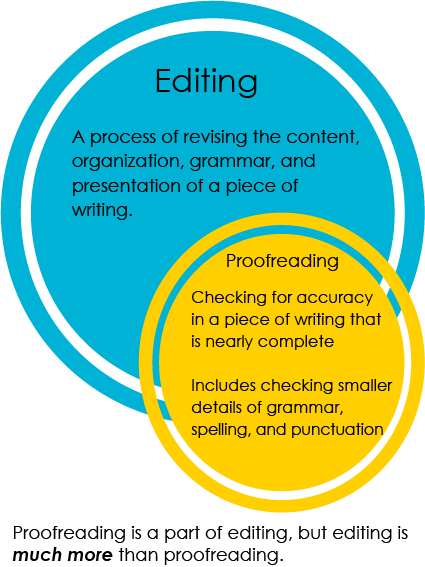
When you think of editing, what is the first thing that comes to mind? Many people view the main task of editing as finding and fixing grammar or spelling mistakes. However, editing is much more. Editing is a process that involves revising the content, organization, grammar, and presentation of a piece of writing. The purpose of editing is to ensure that your ideas are presented to your reader as clearly as possible. Proofreading focuses on checking for accuracy in smaller details of your work. It is a part of the overall editing process, and is best done as the final stage of editing. In the next section of the workshop, you will discover how to implement an editing process that moves from big picture concerns through to the final step of proofreading.
Reflection Questions
- What do you do now to edit your writing?
- What do you do now to proofread your writing?
Effective Editing Copyright © 2019 by Christina Page is licensed under a Creative Commons Attribution-ShareAlike 4.0 International License , except where otherwise noted.
Share This Book
- Writing Worksheets and Other Writing Resources
Editing vs. Revision
About the slc.
- Our Mission and Core Values

What is the difference between editing and revision? We often use the two terms interchangeably and yet there are some important distinctions. True revision requires seeing your writing from a completely different perspective which can be facilitated by another reader's comments and questions.
- is on a sentence level, addressing problems with spelling, grammar, punctuation, or word choice.
- is one-sided. The editor writes comments and corrections on the paper and returns the paper to the writer.
- is hierarchical. An editor looks for "mistakes" and "fixes" them. An editor places value on writing (such as a grade).
- focuses on the paper as a product.
- deals with the paper as a whole, considering strengths and weaknesses, arguments, focus and organization, support, and voice, as well as mechanical issues.
- is dialogue-based. The purpose or revision is to ask questions, expanding ideas and challenging arguments which require discussion between the writer and the reader.
- is non-hierarchical. Offering questions and making observations allow the writer and reader to hold separate and valid opinions. The purpose of discussion is to expand and clarify ideas rather than "correct" them.
- focuses on the writer in the process of writing and increasing the writer's understanding of the paper's strengths and weaknesses.
- clarifies and focuses the writer's arguments by defining terms, making concessions and counter-arguments, and using evidence. This may involve moving or removing entire paragraphs, extending or narrowing ideas, rewriting vague or confusing text, and adding to existing paragraphs.
Student Learning Center, University of California, Berkeley
©1996 UC Regents
This work is licensed under a Creative Commons Attribution-NonCommercial-NoDerivs 3.0 Unported License.
- Affiliate Program

- UNITED STATES
- 台灣 (TAIWAN)
- TÜRKIYE (TURKEY)
Academic Editing Services
- - Research Paper
- - Journal Manuscript
- - Dissertation
- - College & University Assignments
- Admissions Editing Services
- - Application Essay
- - Personal Statement
- - Recommendation Letter
- - Cover Letter
- - CV/Resume
Business Editing Services
- - Business Documents
- - Report & Brochure
- - Website & Blog
Writer Editing Services
- - Script & Screenplay
- Our Editors
- Client Reviews
- Editing & Proofreading Prices
- Wordvice Points
- Partner Discount
- Plagiarism Checker
- APA Citation Generator
- MLA Citation Generator
- Chicago Citation Generator
- Vancouver Citation Generator
- - APA Style
- - MLA Style
- - Chicago Style
- - Vancouver Style
- Writing & Editing Guide
- Academic Resources
- Admissions Resources
A Guide to the Proofreading and Editing Process
Proofreading and editing are two important parts of the revision process, and they are both essential for written documents that will be published or presented to the public. However, they produce different results depending on the type of document, and writers should be aware of what each step entails so that they can make the right choice when it comes to perfecting their work.
Table of Contents
- 1. Proofreading vs Editing
- 2. Editing and Proofreading Examples
- 3. Stages of Editing and Proofreading
- 4. Editing Tips and Guidelines
- 5. Proofreading Checklist
- 6. Online Editing and Proofreading Services
- 7. Frequently Asked Questions About Editing and Proofreading
Proofreading vs Editing
Most texts are both edited and proofread after the draft is completed. These texts include essays, research papers, journal manuscripts, and other works for publication or submission. Both editing and proofreading demand careful attention, but each focuses on different aspects of the writing.
What is proofreading?
Proofreading means checking for and fixing objective errors in a text. This includes identifying and correcting the following:
- Grammar mistakes and mechanics issues
- Spelling errors and typos
- Incorrect punctuation
- Formatting and writing inconsistencies
Before a work is published, proofreaders check a “proof copy” (a printed version of the text) and note errors using standard proofreading marks. Nowadays, most professional proofreaders review digital texts using MS Word’s “track changes” feature or Google Docs’ “editing” mode.
When to proofread
Proofreading is usually the final step of the revision process and is done after editing has been completed. After all errors, formatting issues, and inconsistencies have been corrected, the work is considered complete and ready for publication.
What is editing?
Editing means improving the quality of writing in terms of style, vocabulary, readability, and natural phrasing or “flow.” Editing typically identifies and corrects the following:
- Wordiness (using too many unnecessary words)
- Incorrect or inappropriate terms and expressions
- Repetition and redundancy
- Unacademic and awkward terms
- Incorrect formatting of citations and references
After receiving editing (which can include language editing, copy-editing, and line editing), your expressions and terminology should be more precise, your language less repetitive and awkward, and the overall quality of your writing better.
When to edit
Language editing is usually done after the first draft of a document is finished. After reviewing the work to ensure proper content and organization, authors should edit to improve the language and clarity of their ideas and arguments. This increases the writing’s impact on the reader.
Editing and proofreading can be completed in two separate stages or simultaneously. The revision order depends on the type of work being revised (research paper, essay, cover letter, etc.) and whether the author is self-editing or receiving help from a peer or professional editor.
Basic editing can be done by the author or an experienced peer. However, language editing and proofreading are often done simultaneously by a professional editor with subject expertise and a deep understanding of style conventions and English language rules.
Editing Example
In the editing sample below, the editor has improved readability and elevated the language by changing vocabulary terms, rephrasing sentences, and modifying the transitions.
Proofreading Example
In the proofreading sample below, the proofreader has limited their revisions to objective errors: focusing on correcting grammatical, spelling, and mechanical errors. As you can see, potential issues with style, vocabulary, and expression have not been addressed.
The Stages of Editing and Proofreading a Paper
Do i need both editing and proofreading.
Not all texts require both language editing and proofreading. The type of revision your work needs depends on your writing quality, the type of document, and where you are submitting the work.
Whoever edits your work should:
- Be an “expert” or possess a “professional” level of written English
- Have a deep, technical understanding of English
- Have a native-level knowledge of vocabulary terms, phrasing, and expressions
- Be capable of catching all grammatical, mechanical, and stylistic errors
For these documents, both language editing and proofreading are strongly recommended
- Texts written by ESL authors ( Academic Editing Services )
- Scientific journal manuscripts , books , or other long texts ( Paper Editing Services )
For these authors, language editing would be helpful (but perhaps not essential)
- Academic authors submitting an academic manuscript for publication ( Manuscript Editing Services )
- Businesses and professionals ( Business Editing Services ; Document Editing Services )

For these authors, proofreading alone is likely sufficient
- Students, researchers, and other authors with strong writing and editing skills. ( Assignment Editing Services )
- Fiction and non-fiction writers who have already received editing ( Editing Services for Writers )
- Bloggers and script-writers ( Blog Editing Services ; Script Editing Services )
Ready to get professional editing and proofreading?
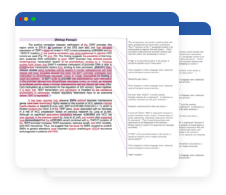
Our Pricing
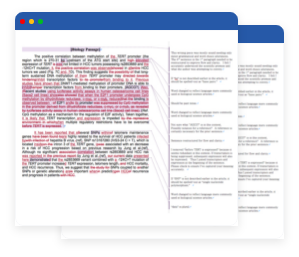
How much does editing and proofreading cost?
Companies vary in how they calculate editing and proofreading rates: by the hour, by the page, by the individual word, or by bulk numbers of words (one price for 1 to 1,000 words; another price for 1,001 to 3,000 words, etc.).
Authors should receive price quotations from several companies and compare to see whose rates are most affordable for the quality. Some companies require a document to be submitted before offering a price estimate.
Proofreading and editing rates per hour
Per-hour editing rates are usually charged by independent freelance editors and can range from $10 to $100 an hour, depending on the editor’s experience and level of subject expertise.
Editors cannot predict exactly how long it will take to edit or proofread a document; therefore, authors may not know the full price of proofreading or editing until after the revision has been completed. Cost, speed, and quality should all be considered when choosing hourly editing rates.
Proofreading and editing rates per word
Professional proofreading and editing services charge per-word rates ranging from $0.01 (one cent) to $0.10 (ten cents) for “standard” revision, which can include basic style editing or simply proofreading or copy-editing.
Application Essay Editing Services
How long does editing and proofreading take.
Authors should leave enough time for editing and proofreading between drafting and publication. However, for papers or essays with a hard deadline, be sure to find an editing service that can deliver revised files on time.
Most online editing services offer several different turnaround times, but a minimum of 24 hours is recommended for proofreading. For longer documents or documents that may require more extensive revision, it is best to allow for at least 48 hours. Additionally, a longer turnaround time is typically associated with a lower editing price.
Wordvice calculates editing rates based on three factors: document type, word count, and turnaround time. For example, editing for a 1,000-word research paper would range in price from around $.05 per word ($46) for a turnaround of 96 hours to $0.08 cents per word ($80) for a turnaround of 24 hours.
Admissions essay editing for documents such as SOPs or letters of recommendation is priced at $0.04 per word ($40) for a turnaround of 96 hours and $0.09 per word ($90) for a turnaround of 24 hours. Lower rates are available for longer turnaround times, but longer turnarounds are only available for documents with higher word counts (minimum 4,000 words for a 7-day turnaround).
Wordvice offers similar pricing for business editing and book editing. Prices are determined by built-in rates that factor in the amount of time and attention different document types require.
Editing Tips and Guidelines
Basic proofreading and editing skills are essential for anyone who writes. For more basic texts such as college and university essays, blogs, and personal writing, there are some techniques you can use to revise effectively before sharing your work with others.
Take a break from the text before editing
When you write, read, and review the same text for hours or days, it becomes much harder to catch errors. Before proofreading and editing, set your work aside for a day or two so that you can come back to it with a fresh perspective.
Edit your writing before proofreading
Before proofreading your work for grammatical and mechanical errors, thoroughly revise your work for style, vocabulary, and clarity. Fixing minor errors will be the final stage in the revision process, so only proofread once you have completed a draft that you are satisfied with.
Make an editing checklist
Before you begin editing your work, create a list of the exact issues you plan to address so you don’t overlook your editing objectives.
Here are some examples of the issues you might want to focus on:
- Substitute incorrect or non- academic terminology and vocabulary.
- Rephrase unnatural phrases, expressions, and sentences.
- Revise transition terms and phrases to better tie your paragraphs together.
- Enhance flow and readability by removing unnecessary and repetitive terms.
- Vary the structure and length of your sentences.
- Apply active and passive voice correctly.
Use proofreading tools and editing software
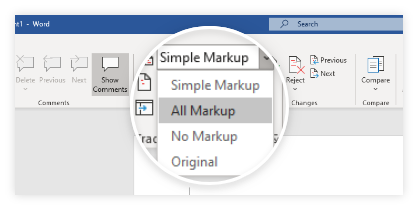
While many research authors use special typesetting systems such as LaTeX, the most widely used word processing program is MS Word. Using Word’s “track changes” function, you can view the precise changes made to a document.
If you have repeatedly misspelled certain words, misapplied capitalization or formatting, or even used UK English when you meant to use US (or vice versa), you can use the Find and Replace function to fix instances of the same mistake.
Once you have finished editing your work using “track changes,” toggle between “Simple Markup” and “All Markup” to view the finalized revision or individual alterations, respectively. Carefully review the revised text before accepting any changes.
Learn from your mistakes to improve your writing
Pay close attention to the specific writing and punctuation errors you tend to make. Understanding what mistakes you repeatedly make can help you understand how to avoid them and improve your writing skills.
Proofreading Checklist: Common Errors in Grammar, Punctuation, and Mechanics
Knowing which errors to look for is challenging. Typos and spelling errors are easy to spot, but mistakes in grammar and punctuation can be more difficult to catch. The table below presents some of the most common objective errors to watch out for when proofreading.
How can you check the quality of an editing service?
Editing quality varies greatly between services, and all authors should do their homework before choosing one to revise their document. Here are a few criteria to assess the quality of an editing company:
A proven record of professional editing and proofreading
Has the service been around for a few years? The length of time an editing company has been in operation can be an important indicator of its quality and trustworthiness.
Highly qualified editors
Does the company have well-qualified editors from a range of academic and scientific backgrounds? Many online editing services display editor profiles on their website.
Client review ratings
Does the service have independent third-party reviews? (e.g., Trustpilot and Google Star Ratings). A good service will often display client reviews and testimonials on their site.

Affordable rates
Does the service charge a per-word rate rather than an hourly or bulk-word rate? For the most affordable proofreading services, choose a company that charges by the word.
Convenient ordering process
Does the service offer an instant price quote for editing and proofreading based on factors such as word count and delivery time?
A range of delivery times
Does the service offer different turnaround times? Can they provide express delivery (24 hours or less) for urgent documents and multiple-day delivery for longer documents?
Security and confidentiality
Privacy is crucial when choosing any online service. Does the editing service use data encryption and 2-step verification? Do their editors sign non-disclosure agreements to keep submitted documents confidential?
Great customer support
Does the service offer a quality or satisfaction guarantee? Are they available to answer questions or concerns about your order 24/7? Choose an editing service that provides contact information on its website and makes itself available to answer questions about its services.
Recommended Editing Service
Wordvice provides English proofreading and editing for a wide range of documents, including journal manuscripts, academic and research papers, college and graduate admissions essays, theses, dissertations, research proposals, and business and corporate documents.
Our standard academic editing , which includes both proofreading and language editing, begins at a rate of $0.04 per word. We offer turnaround times ranging from from 24 hours to 7 days, with 9- and 13-hour express turnaround times also available. Our standard admissions essay proofreading and editing begins at $0.02 per word with similar turnaround times.
Wordvice has an average client review rating of 4.9 on Google Star Ratings and 4.5 on Trustpilot .
Use our citation generator for APA, MLA, Chicago, and Vancouver styles to ensure accurate reference and formatting styles.
Regardless of the turnaround time, document type, or total word count of your document, Wordvice guarantees professional editing by an editor with expertise in the subject area or topic of your work. In fact, we guarantee 100% language accuracy and will work to revise your document until we have met your expectations. Visit our Pricing page to receive an instant price quotation.
Frequently Asked Questions about Editing and Proofreading
29 Proofreading Marks and Symbols—The Key to Error-Free Writing
| Candace Osmond
Candace Osmond
Candace Osmond studied Advanced Writing & Editing Essentials at MHC. She’s been an International and USA TODAY Bestselling Author for over a decade. And she’s worked as an Editor for several mid-sized publications. Candace has a keen eye for content editing and a high degree of expertise in Fiction.
Proofreading marks and symbols, also known as editing marks, are the strange red pen scratches that an editor or proofreader applies to a written piece of work to let the writer know what needs to be fixed. From missing periods to misplaced commas, paragraph breaks, and parts to omit, these marks act like a secret code between the editor and writer.
If you’re a writer looking to work with a professional editor or proofreader or to start offering these services to writers, you need to understand what these symbols mean.
When I initially started collaborating with an editor and using a proofreading service, I had no idea what any of the symbols were when I got my draft back full of weird marks. It took a while to learn them all, and now I’m putting them together with a breakdown of each.
My guide lists each proofreading mark and symbol and defines them with quick explanations and a handy image as a visual reminder. I’ll even include some tips on how to use proofreading symbols.
Ready to master the 29 most common proofreading marks and symbols? Let’s get started!
What Are Common Proofreading Marks and Symbols?
Are you ready? Like, really ready? This list is long but includes every main proofreading mark and symbol you might need to know.
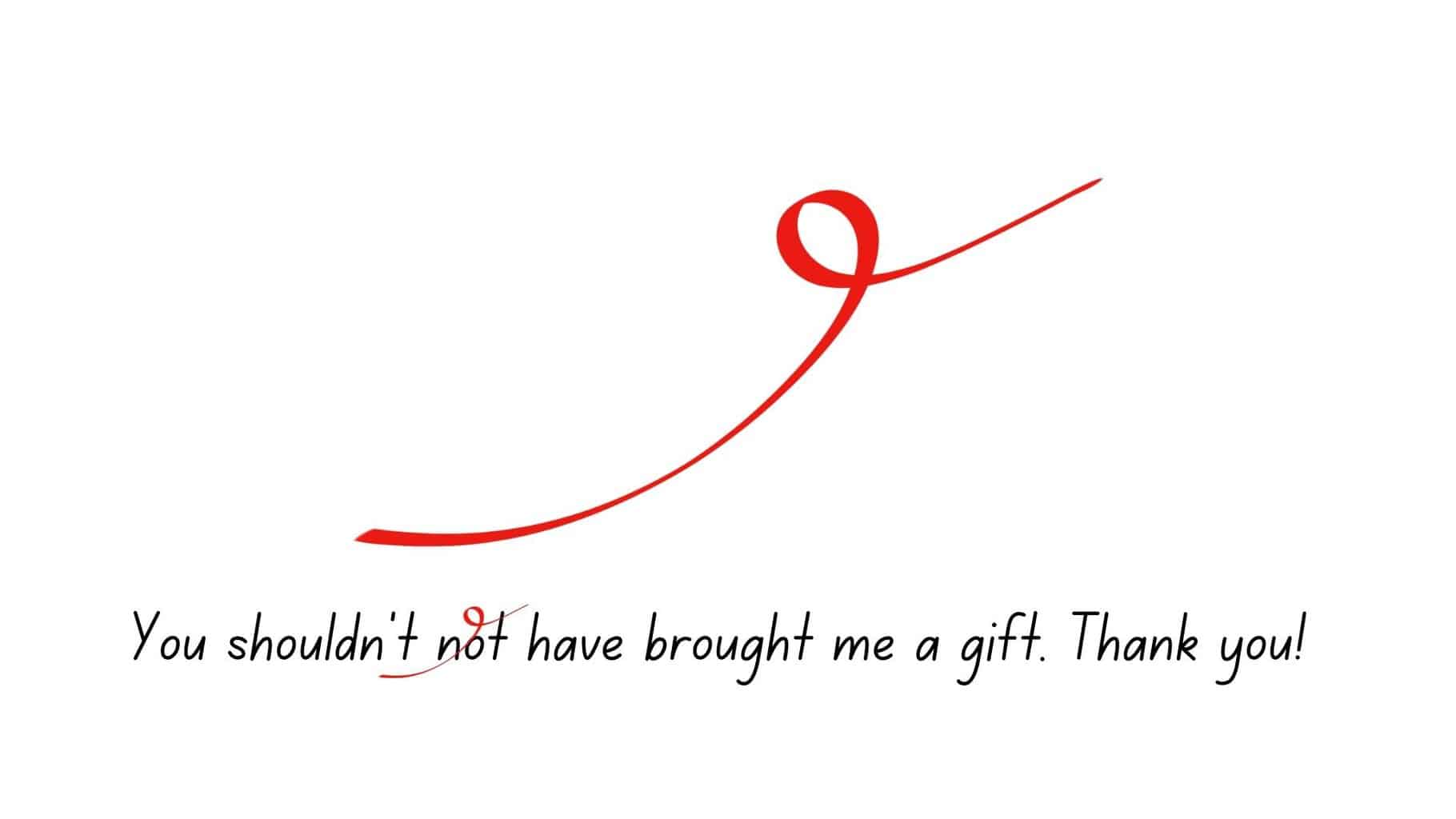
The delete symbol is commonly used in proofreading to indicate the removal of a word or letter. It helps identify over-repeated words, unnecessary adverbs and adjectives, and overused terms within the text.
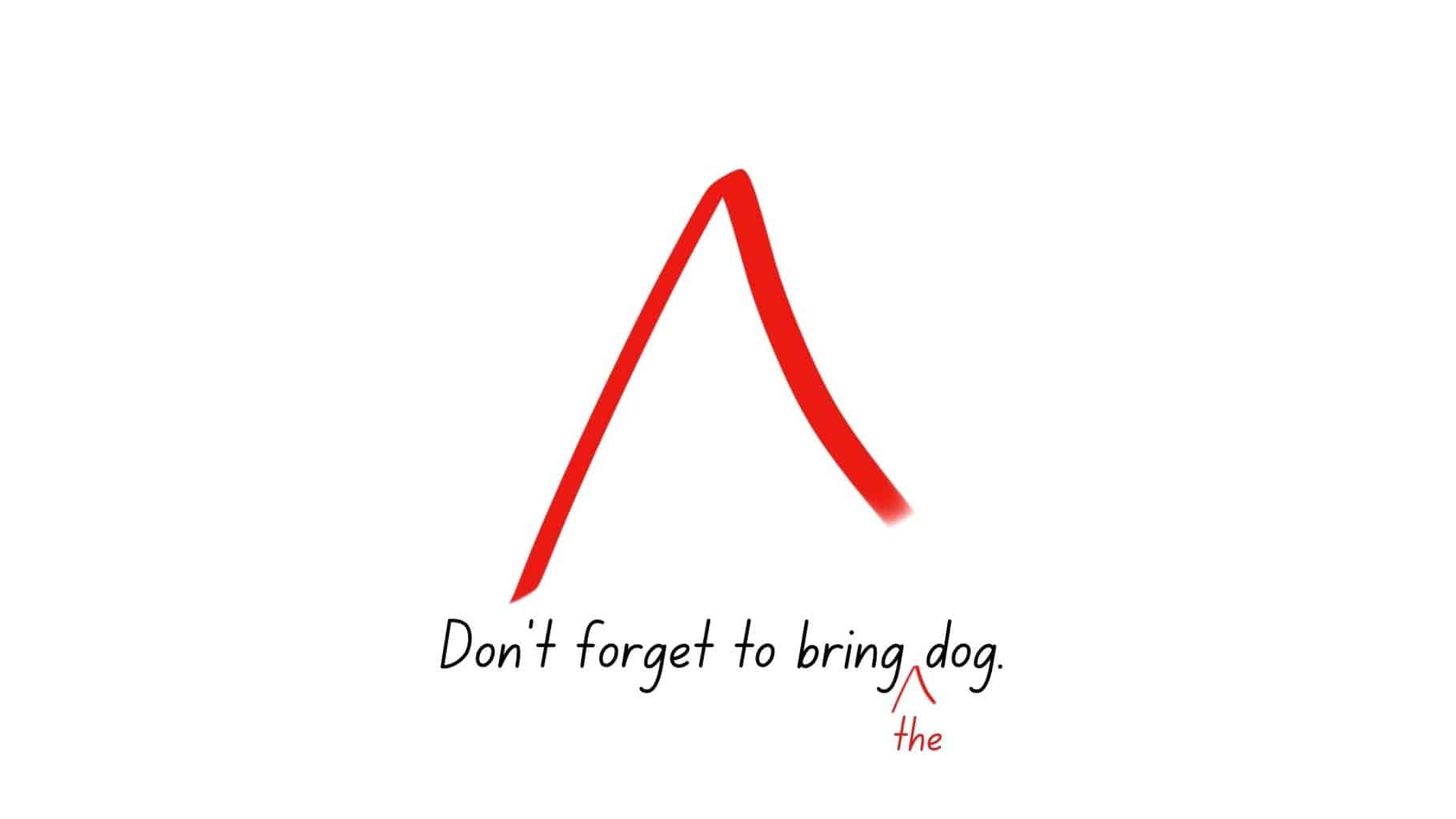
The caret symbol indicates where a word or element should be added to the text. It suggests inserting a word or element to improve the sentence’s clarity or completeness.
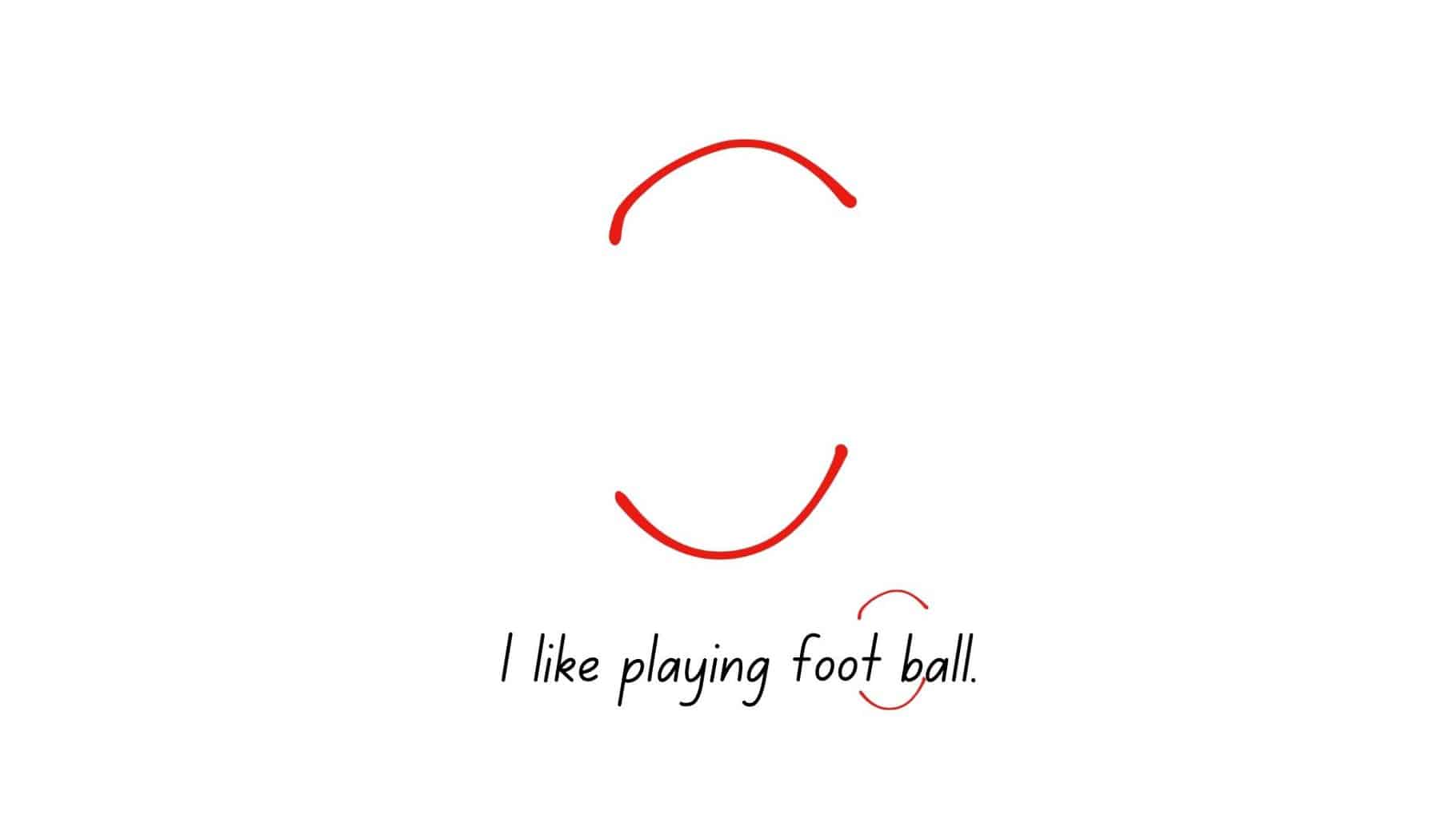
Proofreaders use this symbol to indicate the correction of unequally wide or double spaces in writing. Remove or close the extra space between words if you see this symbol.
New Paragraph
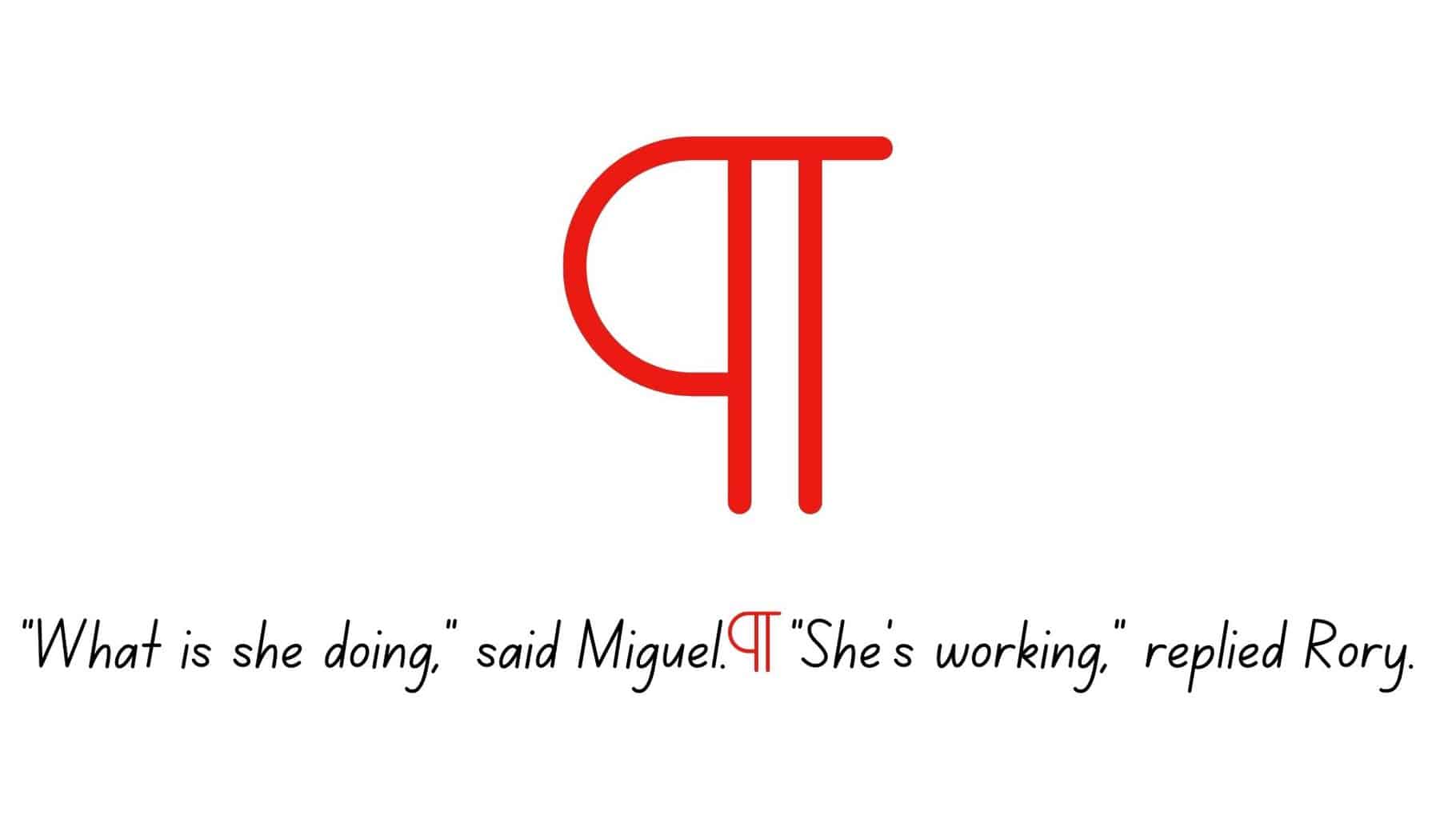
This symbol signals the need to start a new paragraph. It’s commonly used in dialogue exchanges in stories or when the writer introduces a new idea in their essay.
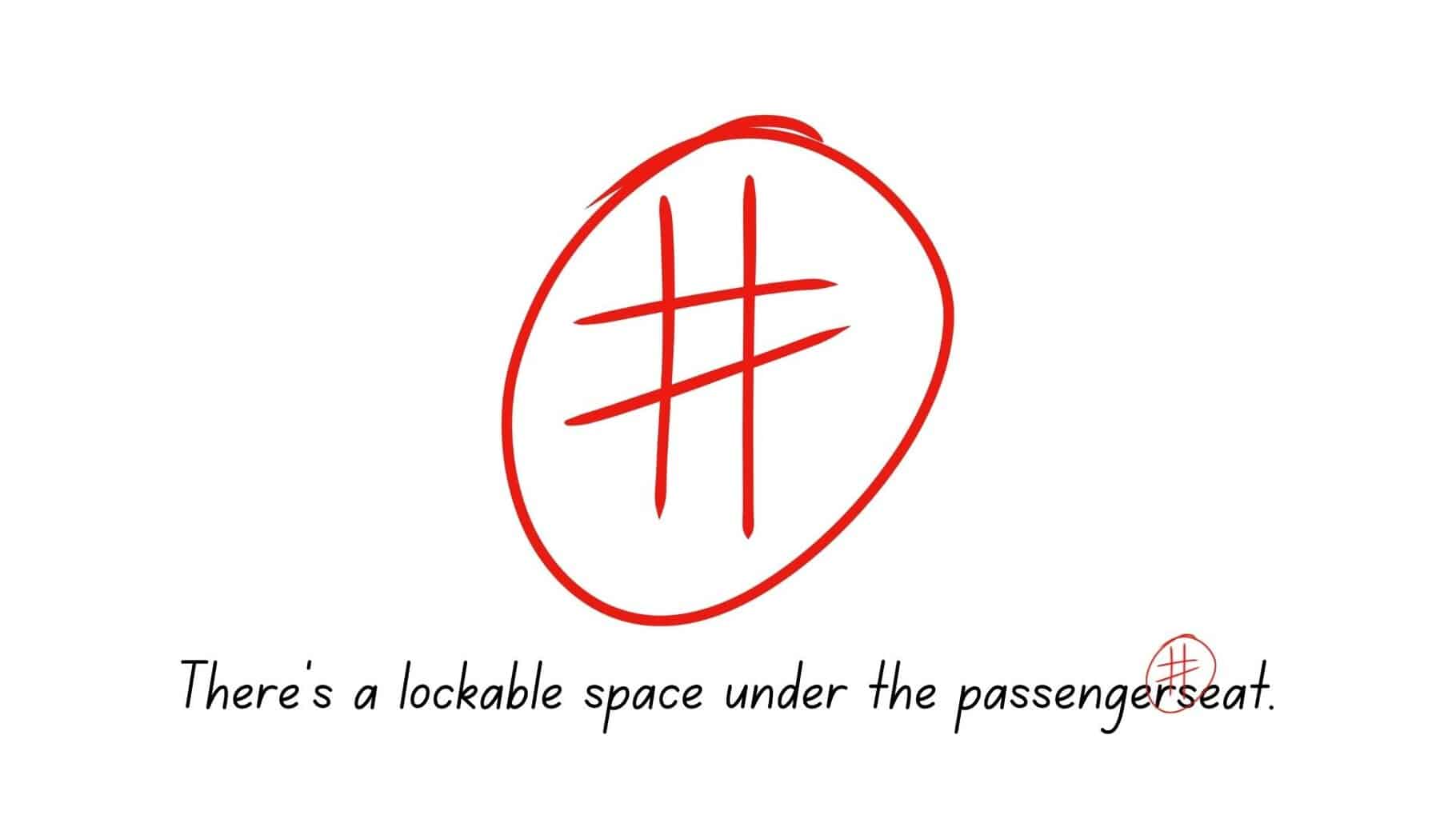
The number or pound sign indicates that you should add space between the two words. It’s commonly used to correct missing spaces, especially in compound words.

It is used to indicate that two characters, words, or sections should be swapped in position.
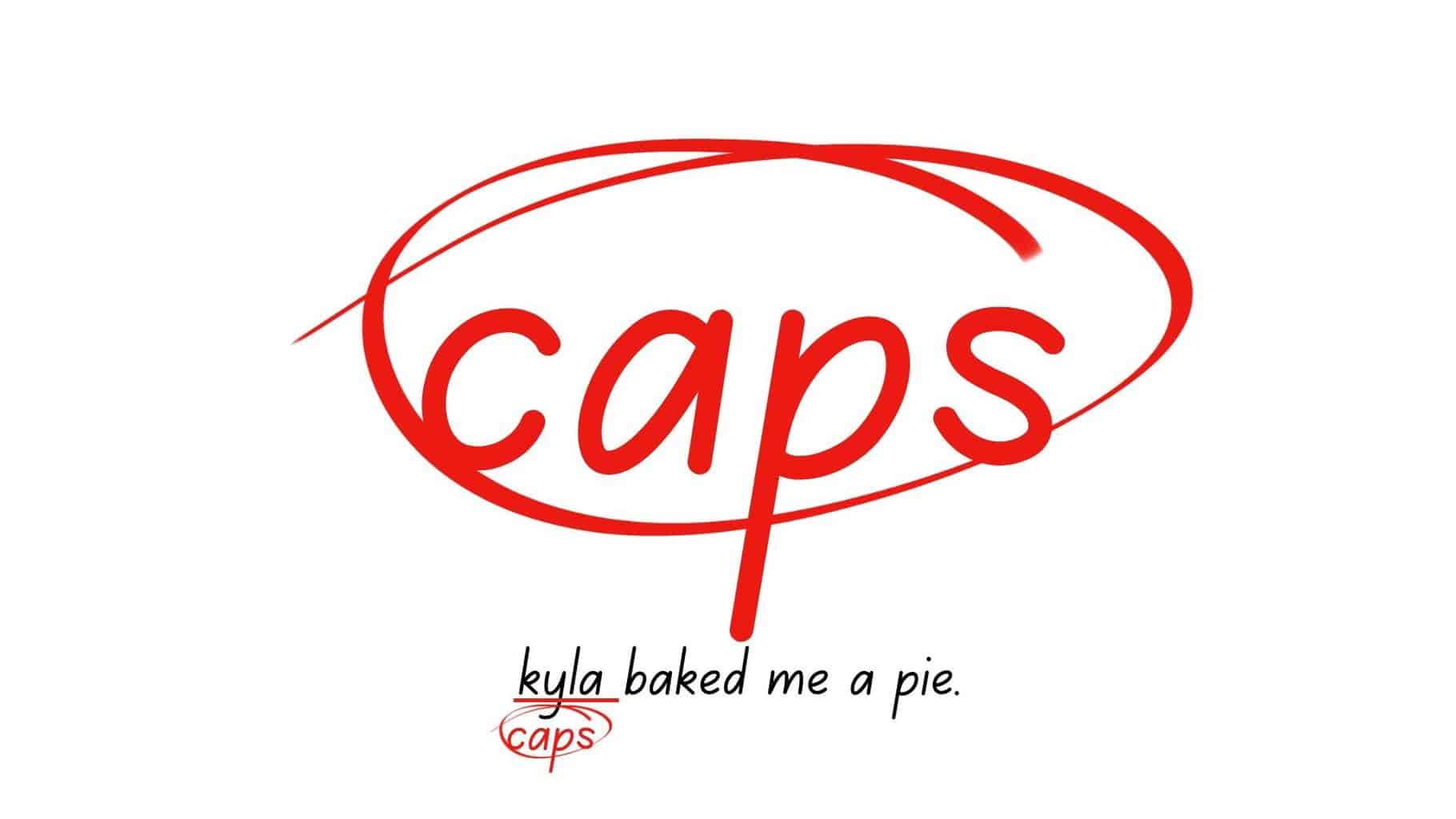
Use this proofreading symbol if a word should start with a capital letter instead of lowercase letters. You can also use the sign for multiple capital letters in the word.
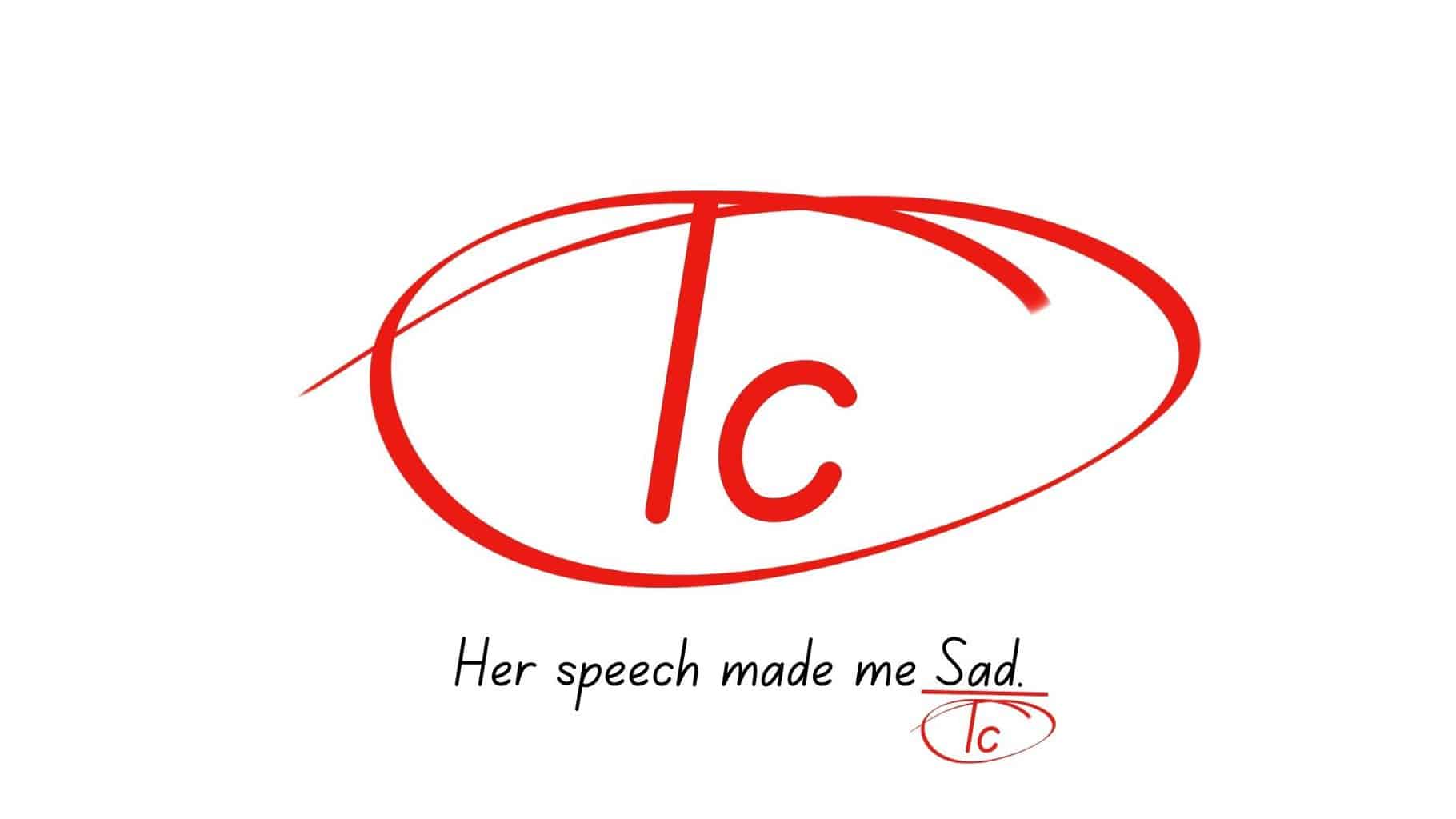
This symbol indicates that a word should start with a lowercase letter instead of a capital one.
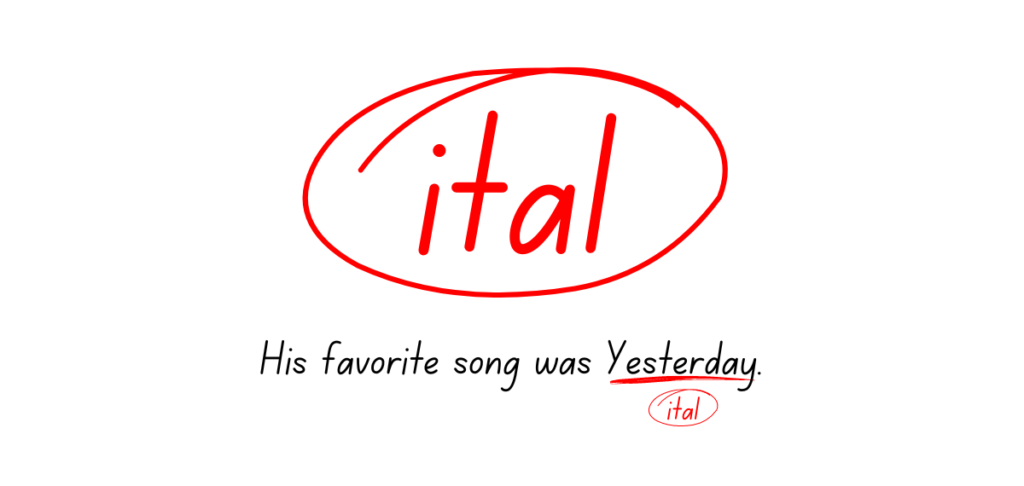
This mark signals that a word should be styled in italics.
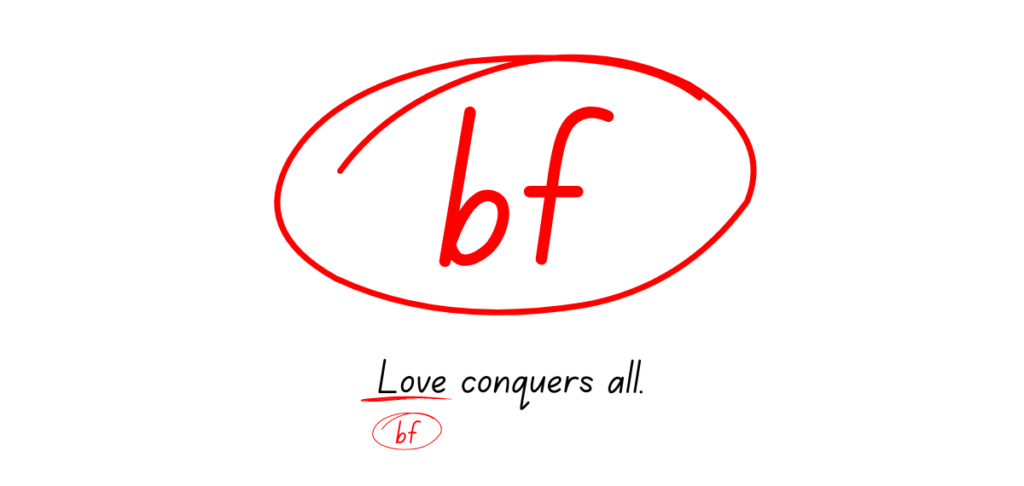
This mark indicates that a specific word should be formatted in bold typeface.
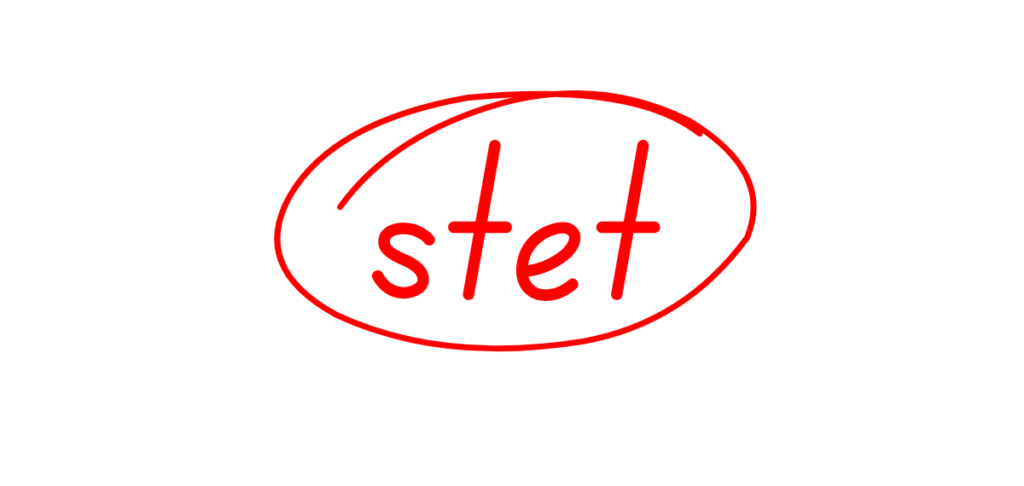
It’s a Latin term that means “let it stand.” Proofreaders use stet to warn the writer to disregard a previous correction or deletion.

This mark indicates that the beginning of a paragraph should be indented. One square represents a one-space indent, while two squares side by side indicate a two-space indent.
Align Horizontally
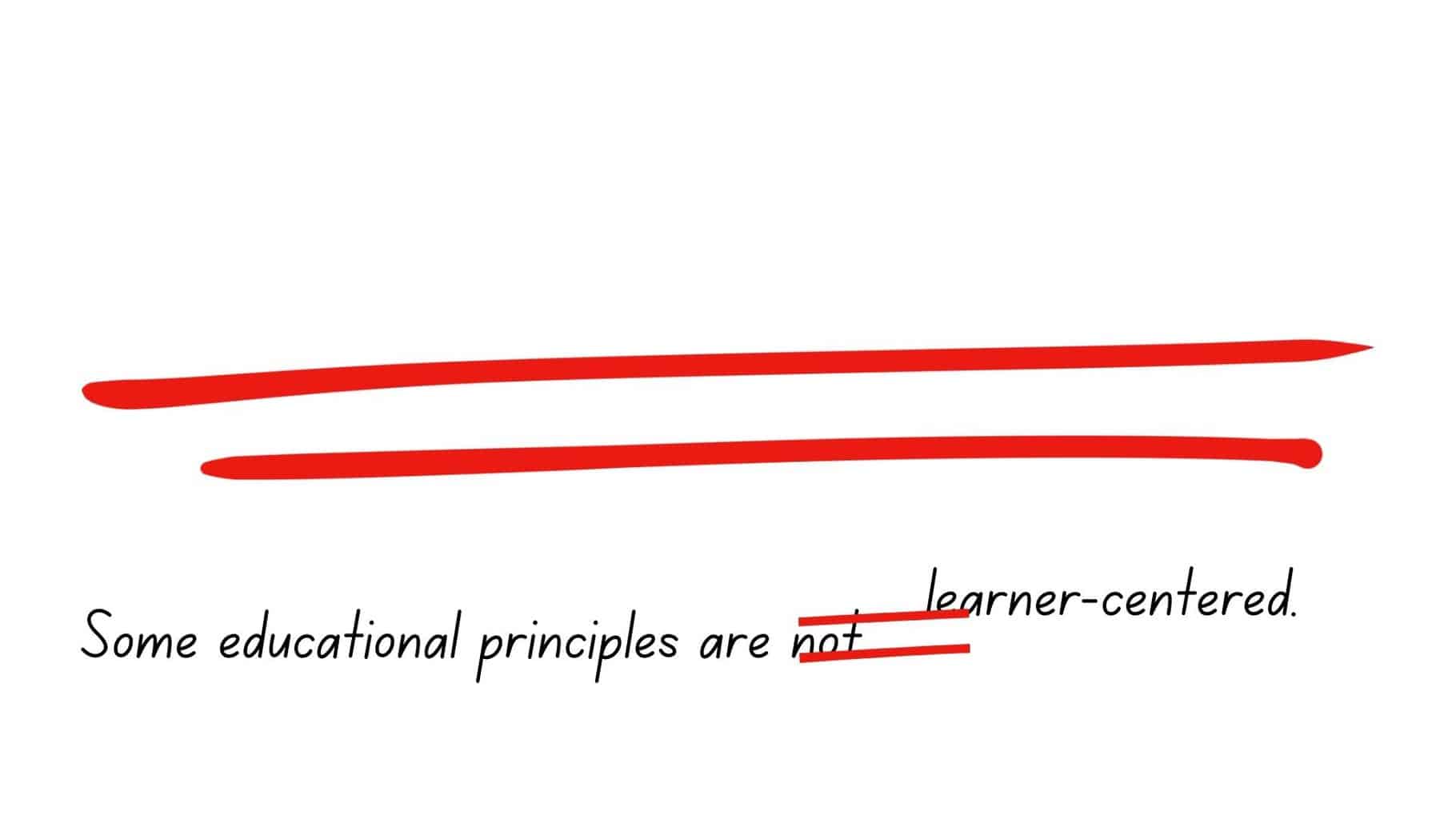
This proofreading symbol is used to let the author know that the text is not horizontally aligned and may need adjustment to ensure proper alignment.
Align Vertically
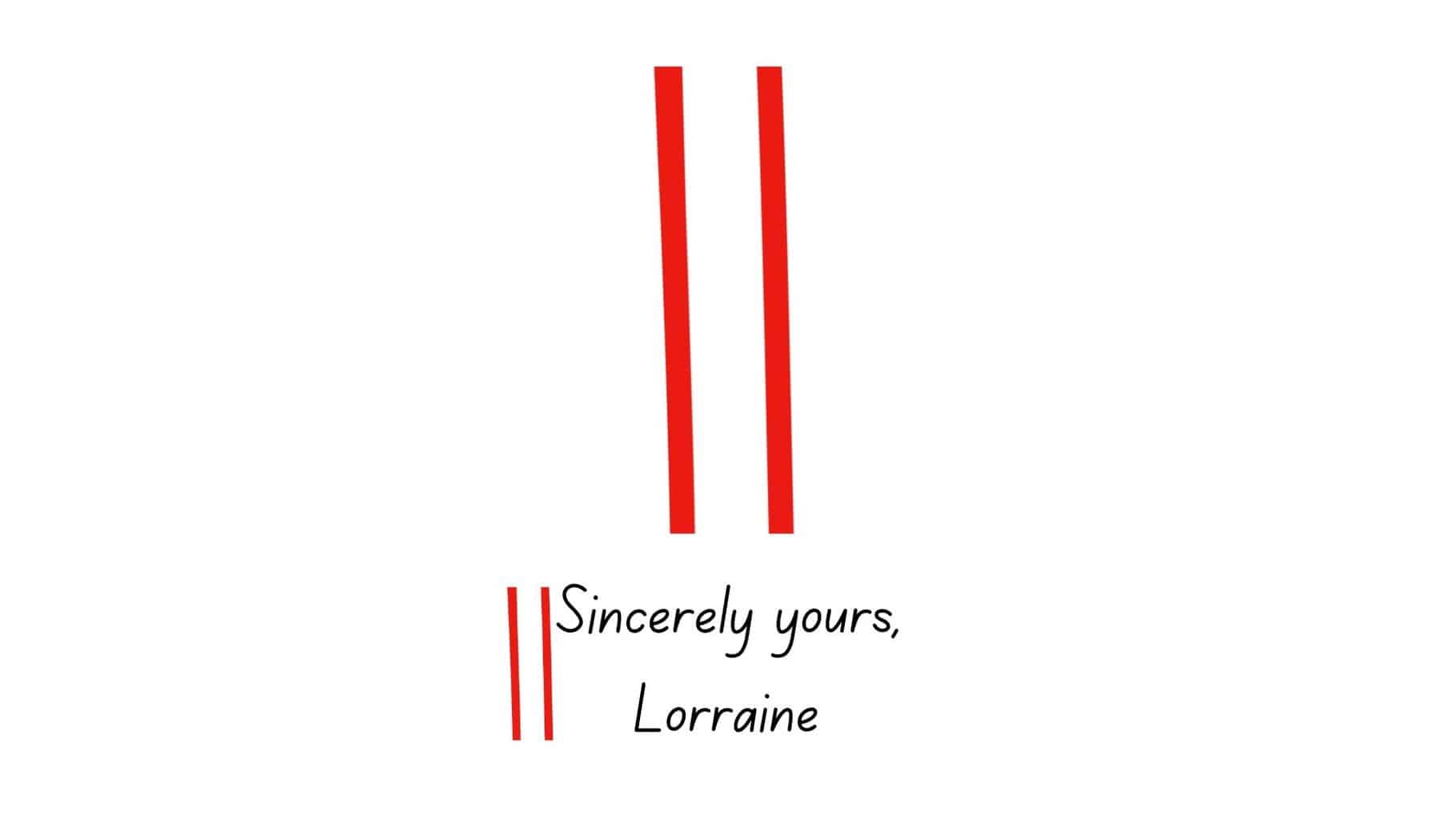
This symbol indicates that the text within those lines should be adjusted or aligned vertically with nearby text or elements on the page for better visual consistency and readability.
Center Text

It indicates that the text should be centered on the page. It is typically used for titles, headings, or any text that requires center alignment for aesthetic or formatting purposes.
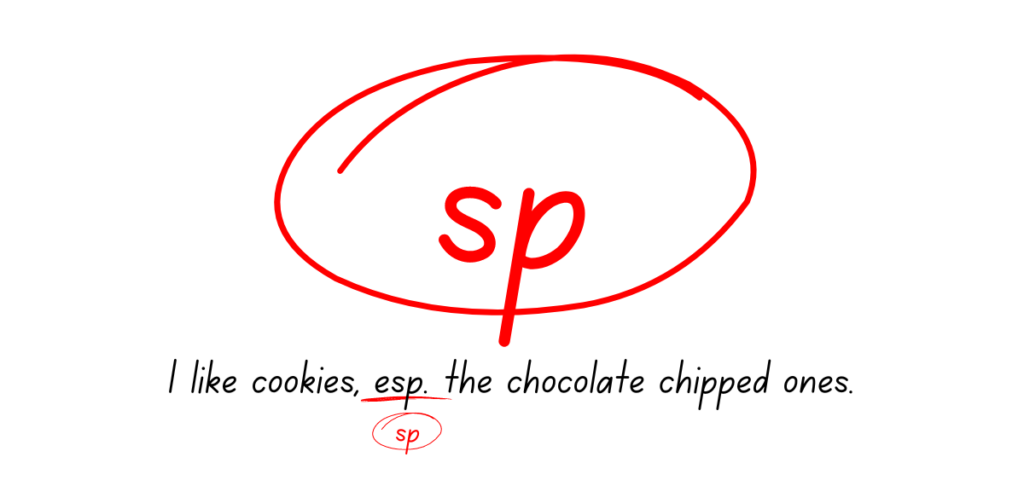
This mark lets the writer know that numbers or abbreviations should be fully written in words, especially if they follow certain style guides.
Move Left/Right/Up/Down
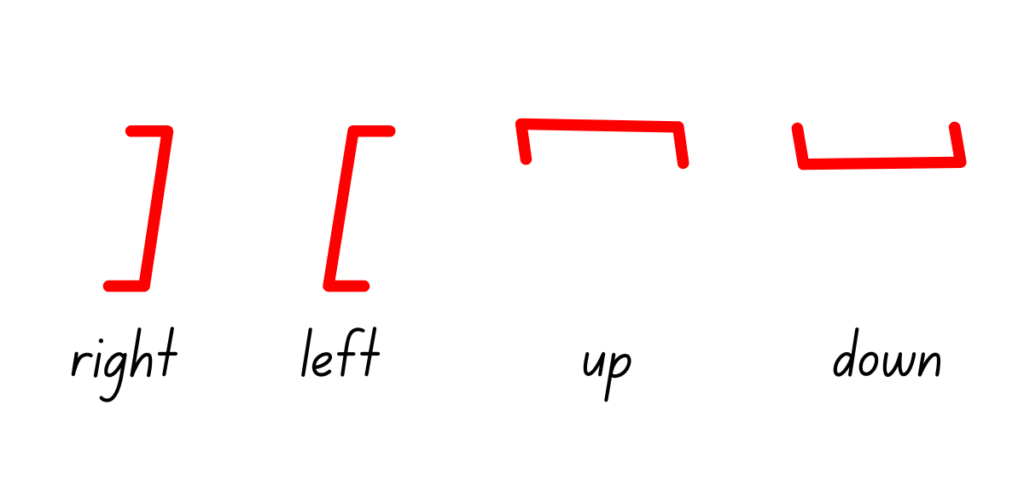
- The move left symbol suggests that the text should be shifted to the left for proper alignment.
- The move right symbol indicates a need to shift the text to the right.
- The move up symbol signifies that the text should be moved upward.
- The move down symbol denotes a need to move the text downward.
Reduce Space

Editors and proofreaders use this to tell the writer that the spaces between words or letters should be reduced.
Delete and Close Up
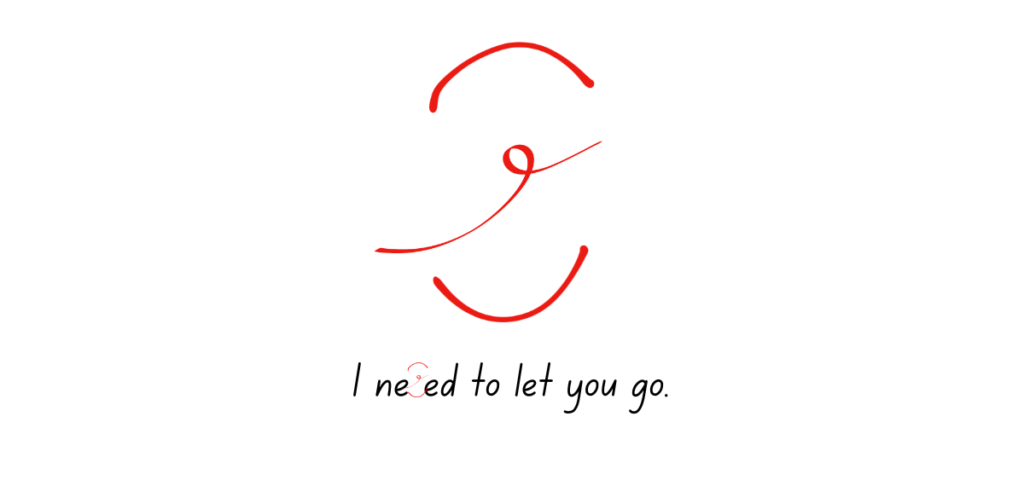
This mark is used to indicate that a letter should be deleted and that no space should be left behind.
Insert a Hyphen
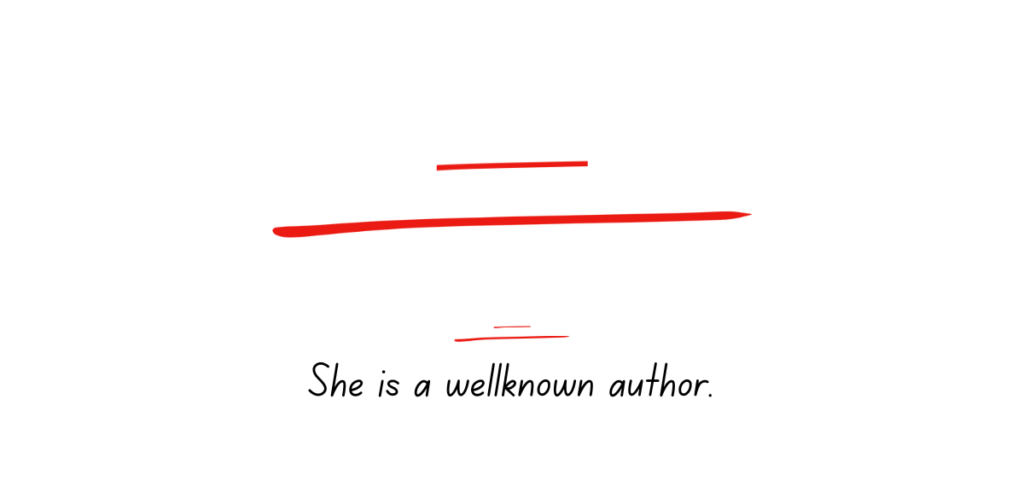
It is used to indicate that a hyphen should be added where one is missing between words or in compound modifiers.
Insert a Period
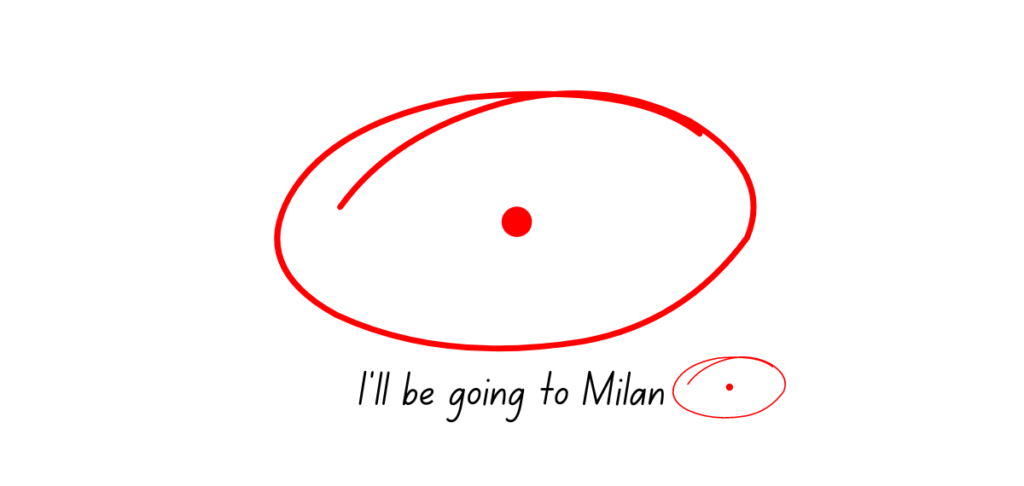
It indicates that a period should be added where one is missing at the end of a sentence.
Insert a Comma
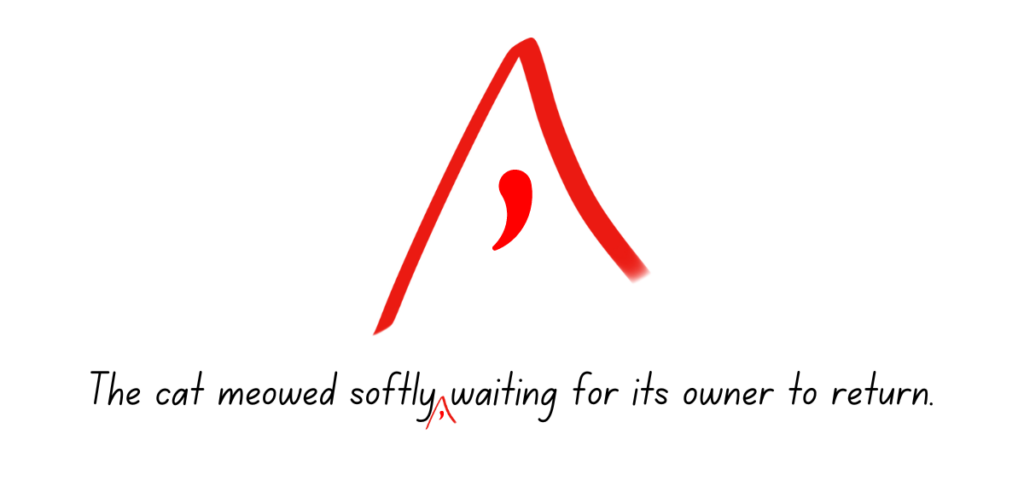
It shows where a comma should be added to improve sentence clarity or grammatical correctness.
Insert Quotation Marks
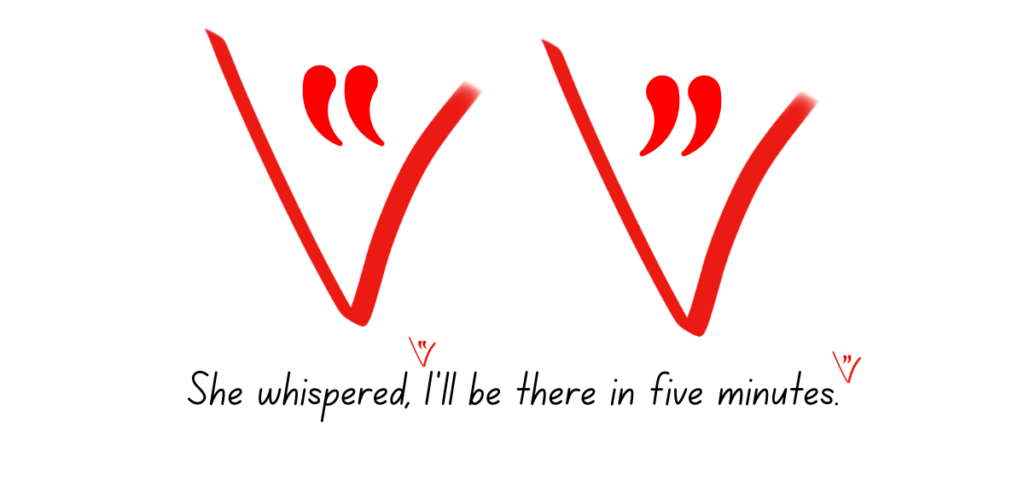
This symbol is used to add missing quotation marks at the beginning and end of direct speech or quotations.
Insert Apostrophe

Editors use this one to show where an apostrophe is needed, like in contractions, or to indicate possession.
No Paragraph

It’s a symbol used when a new paragraph has been incorrectly placed, and the text should continue without a break.
Push to the Next Page/Line
Editors will use this mark when the text or paragraph should be moved to the beginning of the next line or page to improve layout or readability.
Pull to Previous Page/Line
This symbol suggests pulling text back to the end of the previous line or page for better formatting or coherence.
Circled Number
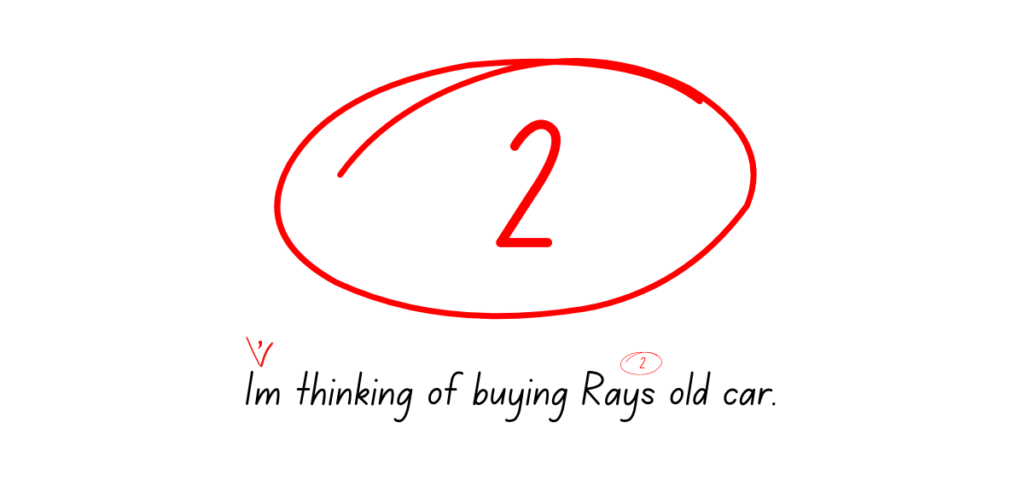
When you see numbers in circles, these indicate multiple instances of the same correction.
How to Use Proofreading Marks
Whether you’re old-school with pen and paper or tech-savvy on the latest digital platform (or a combo of both, like me!), mastering these symbols is your rite of passage into the editing community. Here are some basic tips to help you become more familiar with using them.
Guidelines for Applying Proofreading Marks on Physical Manuscripts
- Grab a pen: Red is best, but any color will do as long as it’s not black or blue. Tradition dictates red, but any color that screams “Look at me!” and is legible will do just fine.
- Be consistent: Choose your symbols and stick with them. Changing halfway through is like switching languages mid-conversation.
- Clarity is key: Your squiggles, lines, and loops should be unmistakable. If it looks like ancient hieroglyphs, you’re doing it wrong. These marks are meant to make the editing process easier and quicker, but if the editor scribbles too much, the writer won’t understand what they mean.
- Margin notes are a reliable friend: Sometimes, a symbol just won’t cut it. Feel free to jot down a note in the margin for extra clarity.
- Double-check your work: Once you’ve marked it all up, go back and ensure you got everything, or mark something you didn’t mean to.
Tips for Using Proofreading Symbols in Digital Editing
- The Track Changes feature is your bestie: Most word processors have it, and it’s a game-changer for digital editing. When turned on, Track Changes will literally track and mark everything you change.
- Comments gold: Unsure about something? Leave a comment in the document attached to the text in question. It’s like margin notes but without the risk of smudging.
- Highlight like it’s going out of style: Use different color choices to highlight text and show various types of edits or to prioritize changes.
- Shortcuts and macros save lives: It may not be as dramatic as that, but they definitely save time. Learn the shortcuts for common editing commands in your word processor so that you never have to stop and search.
- Embrace editing software: Tools like Grammarly and ProWritingAid are designed to make digital editing a breeze. Find your match and learn its ins and outs. Psst! I highly recommend Grammarly.
Another option is to use a proofreading mark plugin. This allows editors to proofread on word processors without having to memorize every single one of these symbols.
To insert the plugin, open your browser and go to the Greg Maxey website. Select “Resources,” then click “Proofreader Marks Add-in.” You’ll find it at the end of the page.
Then, it will open a dialog box with some prompts you need to follow. Open MS Word and you will see a new “Proofreading Marks: section on the “Add-Ins” tab. Now, you can apply proofreading marks on your document like a professional proofreader.
When proofreading, you must drag the cursor over the text that needs a mark. Then, select the drop-down menu under the ribbon and choose the correct mark. Remember to save your changes.
Transitioning from Traditional to Digital Proofreading
Gone are the days when editing meant paper cuts, White-Out, and red ink-stained fingers. Welcome to the digital age, my friends, where proofreading has gone electronic! But don’t worry; the basics of proofreading remain the same, even if the tools have evolved.
Traditional marks now have their digital counterparts: strikeouts, insertions, comments, etc. Software and digital platforms have embraced these age-old practices, ensuring that even in a world of screens, the heart of editing beats on.
Everything You Need to Know about Proofreading Marks
I hope my guide on proofreading and editing symbols with examples will empower you to spot errors in writing more effectively. We covered a pretty comprehensive list, didn’t we? We even touched on a few tips for using proofreading marks and symbols and adapting to digital tools.
Keep practicing until you’re ready to start a proofreading career. And let us know if you have questions about proofreading mark making. We always have a ton of helpful advice and tips right on our site, so don’t be shy!
Grammarist is a participant in the Amazon Services LLC Associates Program, an affiliate advertising program designed to provide a means for sites to earn advertising fees by advertising and linking to Amazon.com. When you buy via the links on our site, we may earn an affiliate commission at no cost to you.
2024 © Grammarist, a Found First Marketing company. All rights reserved.
- More from M-W
- To save this word, you'll need to log in. Log In
Definition of edit
(Entry 1 of 2)
transitive verb
Definition of edit (Entry 2 of 2)
Examples of edit in a Sentence
These examples are programmatically compiled from various online sources to illustrate current usage of the word 'edit.' Any opinions expressed in the examples do not represent those of Merriam-Webster or its editors. Send us feedback about these examples.
Word History
back-formation from editor
1704, in the meaning defined at sense 1a
1917, in the meaning defined above
Phrases Containing edit
- edit oneself
Dictionary Entries Near edit
Edith Cavell, Mount
Cite this Entry
“Edit.” Merriam-Webster.com Dictionary , Merriam-Webster, https://www.merriam-webster.com/dictionary/edit. Accessed 17 May. 2024.
Kids Definition
Kids definition of edit, more from merriam-webster on edit.
Nglish: Translation of edit for Spanish Speakers
Britannica English: Translation of edit for Arabic Speakers
Subscribe to America's largest dictionary and get thousands more definitions and advanced search—ad free!

Can you solve 4 words at once?
Word of the day.
See Definitions and Examples »
Get Word of the Day daily email!
Popular in Grammar & Usage
More commonly misspelled words, your vs. you're: how to use them correctly, every letter is silent, sometimes: a-z list of examples, more commonly mispronounced words, how to use em dashes (—), en dashes (–) , and hyphens (-), popular in wordplay, birds say the darndest things, a great big list of bread words, 10 scrabble words without any vowels, 12 more bird names that sound like insults (and sometimes are), 8 uncommon words related to love, games & quizzes.

Editing and Proofreading Marks in Composition
- An Introduction to Punctuation
- Ph.D., Rhetoric and English, University of Georgia
- M.A., Modern English and American Literature, University of Leicester
- B.A., English, State University of New York
When your instructor returns a composition , are you sometimes puzzled by the abbreviations and symbols that appear in the margins? If so, this guide should help you decipher those marks during the editing and proofreading stages of the writing process .
Common Proofreading Marks Explained
The following proofreading marks have a brief explanation of the definition your instructor is likely trying to convey for your revisions.
ab: Abbreviation (Use a standard abbreviation or write out the word in full.)
ad: Adjective or adverb (Use the correct form of the modifier.)
agr: Agreement (Use the correct ending to make the verb agree with its subject .)
awk: Awkward expression or construction.
cap: Capital letter (Replace a lowercase letter with a capital letter.)
case: Case (Use the appropriate case of the pronoun: subjective , objective , or possessive .)
cliché: Cliché (Replace the worn-out expression with a fresh figure of speech .)
coh: Coherence and cohesion (Make clear connections as you move from one point to the next.)
coord: Coordination (Use coordinating conjunctions to relate equal ideas.)
cs: Comma splice (Replace the comma with a period or a conjunction.)
d: Diction (Replace the word with one that's more precise or appropriate.)
dm: Dangling modifier (Add a word so that the modifier refers to something in the sentence.)
emph: Emphasis (Restructure the sentence to emphasize a key word or phrase.)
frag: Sentence fragment (Add a subject or verb to make this word group complete.)
fs: Fused sentence (Separate the word group into two sentences.)
gloss: Glossary of usage (Check the glossary to see how to use this word correctly.)
hyph: Hyphen (Insert a hyphen between these two words or word parts.)
inc: Incomplete construction.
irreg: Irregular verb (Check our index of verbs to find the correct form of this irregular verb.)
ital: Italics (Put the marked word or phrase in italics.)
jarg: Jargon (Replace the expression with one your readers will understand.)
lc: Lowercase letter (Replace a capital letter with a lowercase letter.)
mm: Misplaced modifier (Move the modifier so that it clearly refers to an appropriate word.)
mood: Mood (Use the correct mood of the verb.)
nonst: Nonstandard usage (Use standard words and word forms in formal writing .)
org: Organization (Organize information clearly and logically.)
p: Punctuation (Use an appropriate mark of punctuation.)
' apostrophe
— dash
? question mark
" " quotation marks
¶: Paragraph break (Begin a new paragraph at this point.)
//: Parallelism (Express paired words, phrases, or clauses in grammatically parallel form.)
pro: Pronoun (Use a pronoun that refers clearly to a noun.)
run-on: Run-on (fused) sentence (Separate the word group into two sentences.)
slang: Slang (Replace the marked word or phrase with a more formal or conventional expression.)
sp: Spelling (Correct a misspelled word or spell out an abbreviation.)
subord: Subordination (Use a subordinating conjunction to connect a supporting word group to the main idea.)
tense: Tense (Use the correct tense of the verb.)
trans: Transition (Add an appropriate transitional expression to guide readers from one point to the next.)
unity: Unity (Don't stray too far from your main idea.)
v/^: Missing letter(s) or word(s).
#: Insert a space.
wordy: Wordy writing (Cut out unnecessary words.)
ww: Wrong word (Use a dictionary to find a more appropriate word.)
- The 9 Parts of Speech: Definitions and Examples
- What Are Run-on Sentences and How Do You Fix Them?
- Proofreaders' and Teachers' Correction Marks
- 100 Key Terms Used in the Study of Grammar
- What Is a Fused Sentence?
- The Mechanics of Writing Composition
- An Essay Revision Checklist
- AP English Exam: 101 Key Terms
- 140 Key Copyediting Terms and What They Mean
- Sentence Parts and Sentence Structures
- The Top 25 Grammatical Terms
- German Grammar Checklist
- Definition and Examples of Periods: Full Stop
- Italian Capitalization Rules
- The Difference Between Gerunds, Participles, and Infinitives
- Guidelines for Using Capital Letters

IMAGES
VIDEO
COMMENTS
Editing is what you begin doing as soon as you finish your first draft. You reread your draft to see, for example, whether the paper is well-organized, the transitions between paragraphs are smooth, and your evidence really backs up your argument. You can edit on several levels: ... Is the meaning of each sentence clear? (One way to answer this ...
Editing is a stage of the writing process in which a writer or editor strives to improve a draft by correcting errors and making words and sentences clearer, more precise, and as effective as possible. The process of editing involves adding, deleting, and rearranging words to cut the clutter and streamline overall structure.
Revising and editing are the two tasks you undertake to significantly improve your essay. Both are very important elements of the writing process. You may think that a completed first draft means little improvement is needed. However, even experienced writers need to improve their drafts and rely on peers during revising and editing.
Editing is the process of revising and refining a written work to improve its clarity, coherence, effectiveness, and overall quality. Editing has been used since the written word first appeared and has evolved through the ages to embody the detailed structural and grammatical steps applied today.
Here's what a professional editor looks for in your essay: 1. Errors in spelling and grammar: This includes ensuring subject-verb agreement, conducting spellchecks on commonly misspelled words, or even maintaining consistency in the tense of your essay. 2. Errors in the use of technical terms:
Revising, proofreading, and editing are different stages of the writing process. Revising is making structural and logical changes to your text—reformulating arguments and reordering information. Editing refers to making more local changes to things like sentence structure and phrasing to make sure your meaning is conveyed clearly and concisely.
Revising and editing an essay is a crucial step of the writing process. It often takes up at least as much time as producing the first draft, so make sure you leave enough time to revise thoroughly. Although you can save considerable time using our essay checker. The most effective approach to revising an essay is to move from general to specific:
2. Prune long sentences and paragraphs. Whether you've exceeded your word count or not, long sentences and paragraphs should be edited because they can be trickier to read, and risk being boring or hard to follow. Try, therefore, to keep sentences to a maximum of two or three clauses (or segments). Avoid long paragraphs by starting a new one ...
An editor is the person who reviews the rough manuscript and makes the necessary changes to polish the writing and make it the best it can be. Editors must have excellent language skills ...
Editing is a process that involves revising the content, organization, grammar, and presentation of a piece of writing. The purpose of editing is to ensure that your ideas are presented to your reader as clearly as possible. Proofreading focuses on checking for accuracy in smaller details of your work. It is a part of the overall editing ...
Revising is making structural and logical changes to your text—reformulating arguments and reordering information. Editing refers to making more local changes to things like sentence structure and phrasing to make sure your meaning is conveyed clearly and concisely. Proofreading involves looking at the text closely, line by line, to spot any ...
Revising. deals with the paper as a whole, considering strengths and weaknesses, arguments, focus and organization, support, and voice, as well as mechanical issues. is dialogue-based. The purpose or revision is to ask questions, expanding ideas and challenging arguments which require discussion between the writer and the reader.
Editing and proofreading can be completed in two separate stages or simultaneously. The revision order depends on the type of work being revised (research paper, essay, cover letter, etc.) and whether the author is self-editing or receiving help from a peer or professional editor. Basic editing can be done by the author or an experienced peer.
Proofreading marks and symbols, also known as editing marks, are the strange red pen scratches that an editor or proofreader applies to a written piece of work to let the writer know what needs to be fixed. From missing periods to misplaced commas, paragraph breaks, and parts to omit, these marks act like a secret code between the editor and ...
The meaning of EDIT is to prepare (something, such as literary material) for publication or public presentation. How to use edit in a sentence. ... Students learn to edit their essays for grammar and punctuation. The software allows you to edit videos on your computer.
Editing is the process of selecting and preparing written, visual, audible, or cinematic material used by a person or an entity to convey a message or information. The editing process can involve correction, condensation, organization, and many other modifications performed with an intention of producing a correct, consistent, accurate and ...
Common Proofreading Marks Explained. The following proofreading marks have a brief explanation of the definition your instructor is likely trying to convey for your revisions. ab: Abbreviation (Use a standard abbreviation or write out the word in full.) ad: Adjective or adverb (Use the correct form of the modifier.)
Help you achieve your academic goals. Whether we're proofreading and editing, checking for plagiarism or AI content, generating citations, or writing useful Knowledge Base articles, our aim is to support students on their journey to become better academic writers. We believe that every student should have the right tools for academic success.
With delivery as fast as 9 hours, our proofreading and editing services are available 24/7. Our highly qualified editors have years of editing experience and a combined expertise in more than 2,000 fields. Your documents are handled in strict confidence and with the highest ethical standards. Professional proofreading and editing by subject ...